For the Love of Flowers – The 4 Loves
by Yik Han
Amongst the fine tomb sculpture found in Bukit Brown are depictions of men in the company of flowers. Lest one gets the wrong impression, these are actually based on four historical personalities from ancient China. Collectively, the carvings form a set known as the “4 Loves”.
The peony (牡丹) is known as the king of flowers not without good reason. During the reign of Emperor Xuanzhong (唐玄宗), the Tang Dynasty was at the height of its power. The opulence of the Tang capital, Changan, was known far and wide and the residents lived a lavish life of luxury. The Emperor was a lover of the peony and his palace was filled with breeds from all over the empire. His fondness for the flower was only surpassed by his affection for his favourite consort. At a palace banquet to celebrate the full bloom of the peonies, the Emperor called upon the poet Li Bai to compose a poem fit for the occasion. The intrepid Li Bai readily came up with a verse which likened the beauty of the flower to that of the Lady. This lady, who was to inspire poems through the ages, was none other than Royal Concubine Yang (杨贵妃), one of the four classical beauties of ancient China. She was to meet an ignominious end when disgruntled generals demanded that she be put to death. Till today, the vivacious peony retains its traditional association with wealth and prosperity.

The Emperor is easily recognized by his stately robes, and his palace attendants hover near as he admires his beloved peonies. (photo Yik Han)
In contrast with the celebration of the material life during the Tang, learned men of the Song Dynasty advocated the cultivation of the inner spirit. A weak and corrupt administration coupled with reverses against foes abroad led to many shunning officialdom, preferring instead the life of a recluse to uphold one’s principles and dignity. The favoured flower of this period was the plum blossom (梅). Its delicate feminine beauty belied the indomitable spirit attributed to it as it blooms during the harsh winter months. The story of Lin Bu (林逋) and his beloved plum blossoms epitomised this trend. Lin, who lived a simple and quiet life during the Song Dynasty (960-1279), was interested in neither fame nor riches. A bachelor all his life, he indulged himself in cultivating plum trees and rearing cranes to such an extent that his contemporaries said that “the plum tree is as his wife and the cranes his children”. The plum blossom’s stoic beauty saw its adoption as the national flower of the Republic of China (ROC) in 1928.
Unlike the plum blossom with its lofty attributes, the chrysanthemum is a much simpler creature which represents the carefree life. Tao Yuanming (陶渊明) was a Song Dynasty poet who chose to stay aloof from court intrigues and retired to spend his days with his beloved chrysanthemum flowers. The state of mind which transcends all cares has been captured in his own verse.
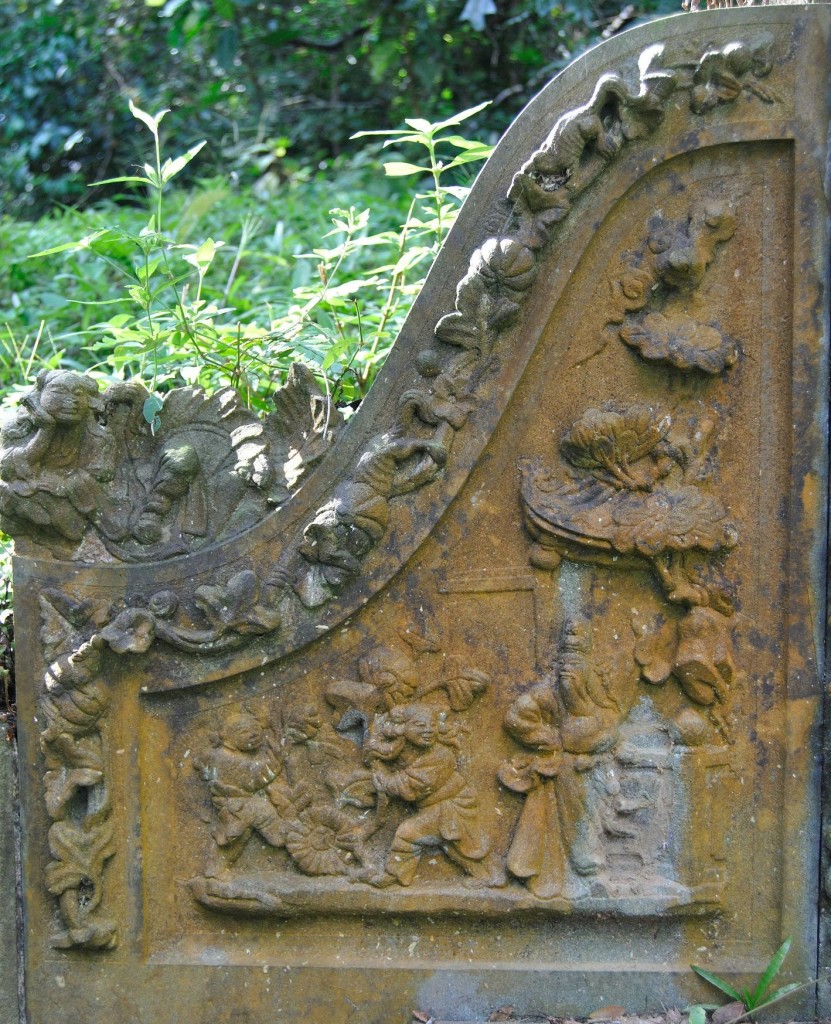
Tao Yuanming in his humble garb tending to his chrysanthemums, easily recognisable by their many petals.(photo Yik Han)
采菊东篱下 悠然见南山
“While picking asters ‘neath the Eastern fence
My gaze upon the Southern mountain rests”
(Translation by Yang Xianyi and Gladys Taylor)
The last of the quartet, the lotus is known for its association with the Song philosopher Zhou Dunyi’s (周敦颐). The “Ode to the Lotus”, arguably his most popular verse, explains his preference for the lotus above all other flowers.
自李唐來,世人甚爱牡丹。予独爱莲之出于泥而不染,濯清涟而不妖 。
“Since the Tang Dynasty, many love the peony. My fondness is solely for the lily as it stays pure even though it grows in mud. After cleansing with water, it does not become bewitching.”
The lotus flower has often been taken as an allegory of how a gentleman should behave, abiding by his principles while navigating the treacherous paths of the world.
In Bukit Brown, carved panels depicting the “4 Loves” can be found on the shoulders (the stone slabs adjoining the tombstone) of tombs from the 1920s and 30s. Usually, only two of the flowers are depicted; only where there are double tombs with four tomb shoulders to utilise will the full set be present. One of these rare examples is the double tomb of Tok Cheng Tuan and his wife which is due to make way for the new highway.
The four flowers have an additional association with the seasons as they are supposed to bloom at different times: lotus (summer ), peony (spring), chrysanthemum (autumn), plum (winter). This is thematically similar to the grouping “Four Friends of the Seasons”, a favoured theme for objects adorning the study and implements of the literati, in which the bamboo is substituted for the peony. In addition, a variant of the “4 Loves” encountered in traditional Chinese art uses the association of the poet Su Dongpo with ink stones or geese. This variant has yet to be encountered in Bukit Brown.
Other posts by Yik Han on tomb aesthetics:
They are among the world’s brightest, nominated for leadership, talent and contributions in the social and economic spheres to the World Economic Forum of Young Global Leaders.
40 of them dropped in at Bukit Brown on 23 October 2012, as part of a programme there were attending at the Lee Kuan Yew School of Public Policy. Volunteer Guides, Claire, Catherine, Keng Kiat and Millie took them on a one hour and half tour which only managed to cover three tombs but we still covered a lot of ground in history, heritage and civil engagement.
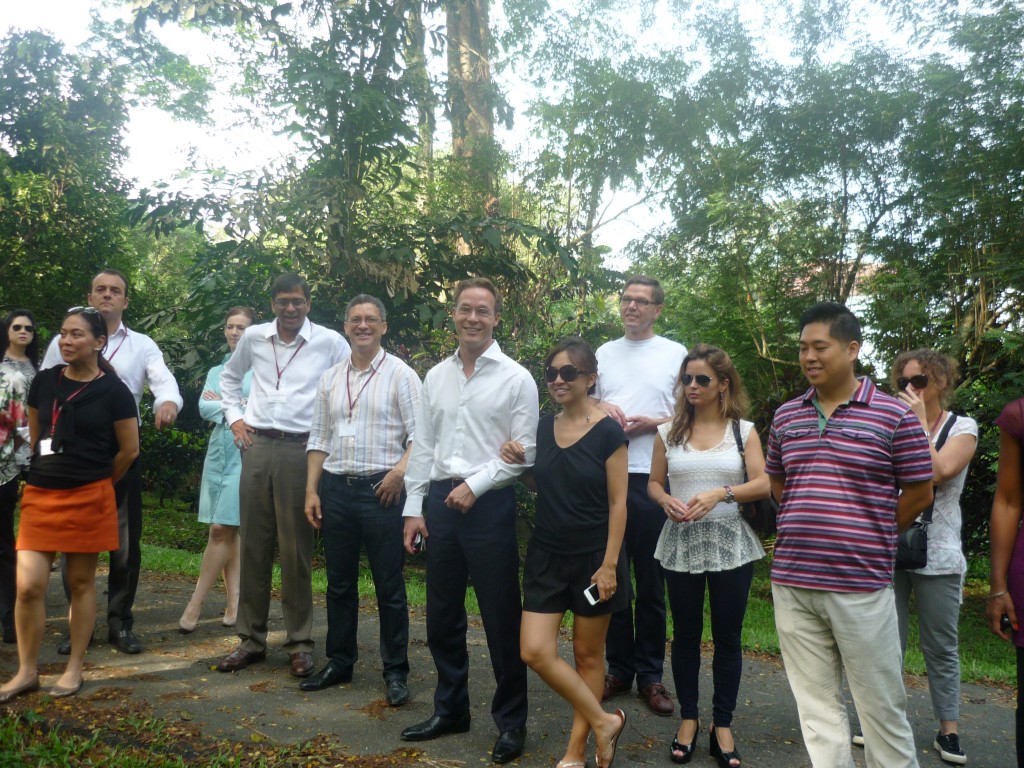
Our best dressed participants to date, and attentive. Impressed by the women who came in high heels and wedgies who climbed with us (photo Catherine)

A wheel chair participant getting assistance from his team members to the tomb of Ong Sam Leong located at the highest point in Bukit Brown (photo Catherine)

Mates Jaime and Marco help Christian get up to see Ong Sam Leong’s grave, with his wife making sure all are in good shape (Photo: Claire Leow)

Back into the classroom, and a robust discussion on development, after a short presentation of Singapore History from colonial times when civil society had much to contribute under the British” laissez faire” adminstration compared to present times, when the state has stepped in with providing more social services. Vice Dean of Academic Affairs, Kenneth Tan helmed the one hour session (photo Catherine)
The Dragon King, The Emperor and a New Wife….
The most spectacular cluster of tombs at Bukit Brown belonging to Ong Sam Leong and family is resplendent with carved panels which depict stories from epic Chinese classics.
Ang Yik Han shares 2 panels of a story in the Chinese classic “Journey to the West”
Panel 1 from:
“After touring the underworld, the spirit of Emperor Taizong returns”
游地府太宗还魂
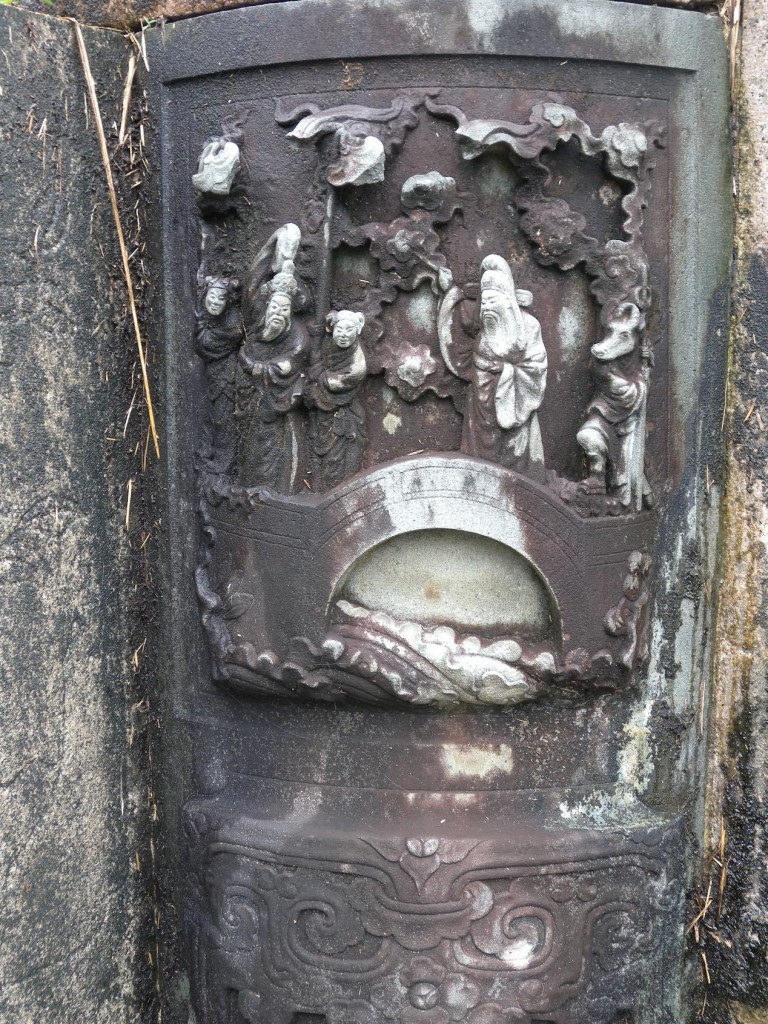
Underworld official adds 2 strokes to character as Emperor flanked by 2 companions look on (photo Yik Han)
Background: One of the dragon kings ran afoul of celestial law and was sentenced to be executed by an official at the Tang court. The desperate dragon turned to the then Emperor, Li Shiming (李世民), and beseeches him not to allow the official to go to sleep as that was the time the deed was supposed to be done. The Emperor agreed to help and promptly summoned the official to play chess overnight with him. During the game however, the official dozed off and in that short interval his spirit went off and slew the dragon king.
进瓜果刘全续配
Tour report: Photos by Philipp Aldrup. For more photos, click here
This is what Bukit Brown looks like in early morning
And this is what early morning participants look like at 7.30 am
And if you want to know more about Philipp the photographer please visit his page
—————————————————————————————————————————–
Time 7.30am – 10 am
Keng Kiat (97903886) guiding.
We will not be visiting the biggest tomb, nor the colourful Sikh guards.
Highight is Keng Kiat will show and tell the mystery of a tomb which looks like a tortoise, has elephants and the name of the occupant means “golden tiger” . It is the latest, significant “discovery”
Register here just to keep track of numbers turning up.
==========================
After the main gate, go ahead another twenty metres, to the right of the SLA officeFor information on how to get there and handy tips please visit
http://bukitbrown.com/
Optimally the group size is 30 participants (15 individuals/guide).Please click ‘Join’ on the FB event page to let us know you are coming, how many pax are turning up, or just meet us at the starting point at 9am. We meet there rain or shine.
==========================
The tour:
The Bukit Brown area is about 233 hectares in extent, bordered by Lornie Road, Thomson Road and the Pan-Island Expressway. It lies just to the south of the Central Catchment Forest, being separated from it by Lornie Road and includes Singapore’s only Chinese Municipal Cemetery. With more than 100,000 graves, Bukit Brown is also one of the largest Chinese cemeteries outside of China.
Don’t forget to bask in the peaceful surrounds, and also chat with your guides and make friends with other participants. We are amateurs and volunteers, but we are passionate and serious about what we do at Bukit Brown, and we encourage sharing of knowledge.
Here is a map of the grounds:
http://bukitbrown.com/
==========================
Please take note:
1. We will be walking mainly on paved roads. But there are hill treks so dress appropriately, especially your footwear.
2. Wear light breathable clothing. Long pants and long sleeves if you are prone to insect bites or sunburn. Bring sunblock and natural insect repellent.
3. Wear comfortable non-slip shoes as safety is important. Walking sticks are recommended.
4. Do read up on Bukit Brown before going so you have a better understanding of the place (e.g. BukitBrown.com)
5. Do bring water, light snacks, poncho/umbrella, sunhat and waterproof your electronics.
6. Please go to the toilet before coming. There are NO facilities anywhere there or nearby.
==========================
How to get there by MRT / Bus:
Bus services available: 52, 74, 93, 157, 165, 852, 855.
From North: Go to Marymount MRT and walk to bus-stop #53019 along Upper Thomson Road. Take Buses 52, 74, 165, 852, 855
Alight 6 stops later at bus-stop, #41149, opposite Singapore Island Country Club (SICC), Adam Road. Walk towards Sime Road in the direction of Kheam Hock Road until you see Lorong Halwa.
From South: Go to Botanic Gardens MRT and walk to bus-stop #41121 at Adam Road, in front of Singapore Bible College. Take Buses 74, 93, 157, 165, 852, 855. Alight 2 stops later at bus-stop, #41141, just before Singapore Island Country Club (SICC), Adam Road. Cross the bridge, walk towards Sime Road, follow the road until you see Lorong Halwa.
By car:
Turn in from Lornie Road, to Sime Road. Then, turn left into Lorong Halwa.
Parking space available at the largish paved area near the cemetery gates.
October 13 saw volunteer guides, Walter Lim, Yik Han, Keng Kiat and Ee Hoon guiding 2 groups on a special Tong Meng Hui (TMH) Tour for museum docents and students from Pioneer JC working on a TMH project.
The tour was researched and designed by Walter who conducted the first Revolutonary tour in Mandarin also for museum docents. This TMH tour was adapted in English by the bi lingual brownie volunteer guides and co-ordinated by one f9 brownie, me 😉 The 2 tours were filmed for an upcoming documentary series on Bukit Brown.

Visiting Khoo Seok Wan, the hibiscus is always in bloom, the poet speaks through the poem he wrote for himself inscribed on his alter (photo Catherine Lim)
Read the poem here

Tie a red ribbon on a stake tomb? KSW tomb is in the way of the 8 lane highway (photo Catherine Lim)
The Republican Party was formed after the TMH. See Tiong Wah and Khoo Seok Wan are members. The party together with TMH are collectively part of the Reformation movement of new China after the fall of Qing Dynasty.
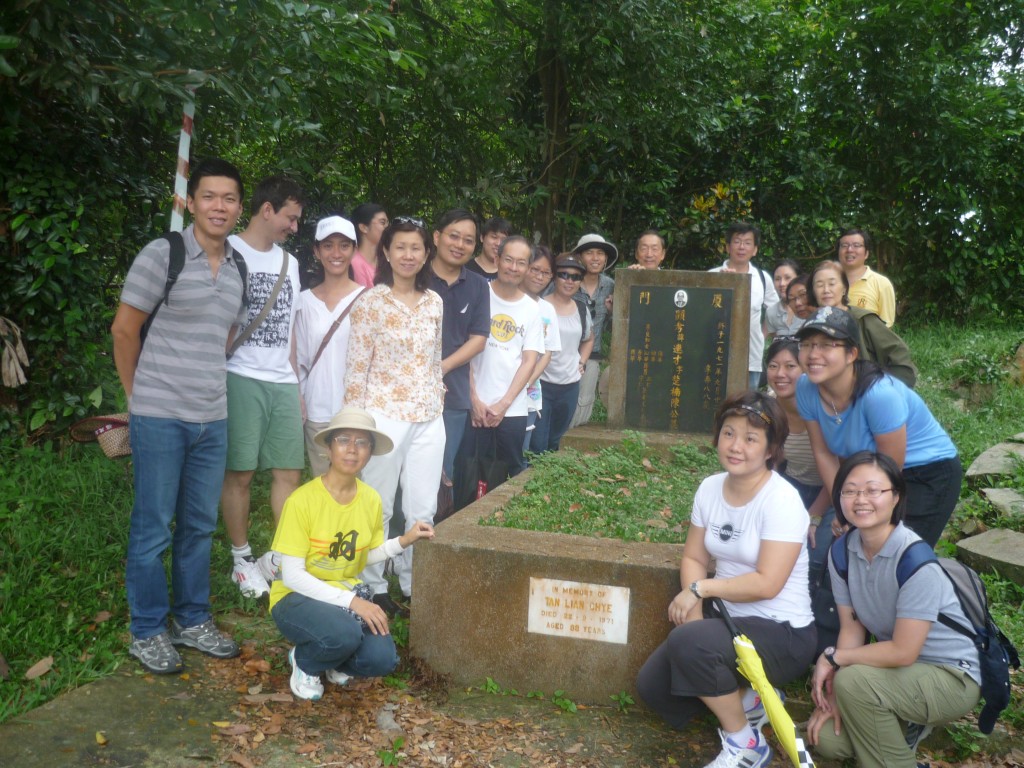
Tan Chor Nam, aka as Tan Lian Chye last and most significant stop for the docents. His photo with Sun Yat Sen is the first one which greets visitors at Sun Yat Sen Memorial Hall
The docents felt that visiting the TMH tombs helped to bring these pioneers alive and they have more stories to share when they next guide at the Sun Yat Sen Memorial Hall.
compiled by Catherine Lim
By Eugene Tay
Eugene helms the movement “We support the Green Corridor” and is one of the partners of All Things Bukit Brown.
The Green Corridor is a former railway while Bukit Brown is a cemetery, so different yet so similar. The Green Corridor and Bukit Brown both connects the past and future, and both involves heritage and the environment. I hope that all of you can support the preservation of Bukit Brown, just as you have actively supported The Green Corridor so far.
I supported The Green Corridor proposal by NSS because I feel that it would improve Singapore’s long-term resilience. The biggest threat to Singapore is apathy, and when Singaporeans do not feel a sense of belonging and are not bothered with what goes on here, then Singapore is in trouble.
For Singapore to survive and prosper in the long term, it is necessary to have more opportunities in preserving our shared memories and creating our shared vision. And keeping the railway lands as a Green Corridor is one opportunity not to be wasted.
Similarly, I feel that Bukit Brown is another excellent opportunity that enables Singaporeans to feel they belong here by remembering our past and creating our future.
Remembering Our Past
Bukit Brown tells the stories of our forefathers who built Singapore, and creates opportunities for history education and discovery. The cemetery connects Singapore’s past and present, and allows us to understand that Singapore’s success is built up by our forefathers’ sweat and tears, and should not be taken for granted.
We should preserve Bukit Brown because it helps us remember our past and keeps us rooted to Singapore.
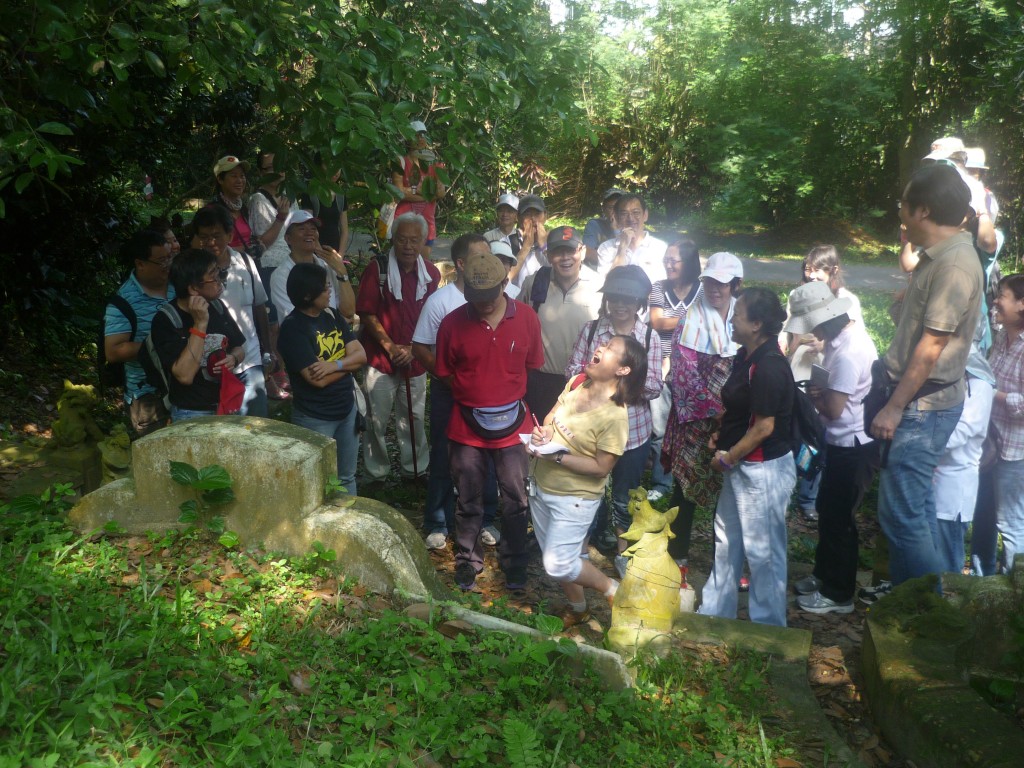
Intense interest in the historical tombs and shared camaraderie on public tours (photo Catherine Lim)
Creating Our Future
Bukit Brown presents the opportunity for transforming the cemetery into a world-class living outdoor museum or heritage park. If this transformation adopts a bottom-up approach and with stakeholder engagement, it would allow us to come together, plan and work towards a future Singapore where heritage, nature and our economic needs can co-exist.
We should preserve Bukit Brown because it enables us to work together and build bonds and resilience, and to create a space where our children and their children can enjoy and be proud of.
Support Bukit Brown
Singapore is a young nation and needs more common spaces like The Green Corridor and Bukit Brown to remind us how we got here and why this is home, and to create opportunities for building our future social resilience. Support Bukit Brown, just as you have supported The Green Corridor.
Here’s what you can do:
1. Sign the petition to save Bukit Brown 100% at the SOS Bukit Brown – Save Our Singapore website.
2. Join the Heritage Singapore – Bukit Brown Cemetery Facebook Group to understand more about Bukit Brown and keep yourself updated.
3. Spread the message by sharing with your friends about Bukit Brown and urging them to sign the petition.
In the end, our society will be defined not only by what we create, but by what we refuse to destroy. – John C. Sawhill
By Eugene Tay
Snap shots of butterflies at Bukit Brown courtesy of Victor Yue and EiLeen Ong. There is a Chinese belief that butterflies at cemetery are signs ancestors are around and happy for the company.
More information on butterflies spotted in Singapore can be found by joining this group Butterflies of Singapore and Malaysia
It was the inaugural Revolutionary Tour so dubbed because the tombs visited belong to the revolutionaries of the Tong Meng Hui. They made Singapore a base to raise funds to support Sun Yat-Sen in bringing about the fall of the Qing Dynasty who ruled between the 1905 – 1911. it was popularly called the “辛亥革命” (Revolution of the Xin Hai Year) Post 1911 they continued to play a part in influencing the course of China’s history and also contributed to Singapore’s social, economic and community development.
Walter Lim led the tour conducted in Mandarin for some 36 guides from the Sun Yat Sen museum, many of whom also guide in Mandarin at the Singapore History and Peranankan Museums. He was assisted by volunteers, Yik Han and Ee Hoon. As tours went, it was one of the most engaging and lively of tours conducted at Bukit Brown, with participants sharing their insights and postulating various theories. It took nearly 5 hours to cover just under 10 tombs. There are 13 known TMH tombs and 14 tombs known to belong to Republicans – the latter was formed after TMH at Bukit Brown. Collectively both groups were part of the Reformation movement of the New China.
The following is a photo essay report with photos by Ee Hoon and captions contributed by Walter and Yik Han. Of the tombs covered 3 belong to Republicans: Khoo Seok Wan, Leow Chia Heng and See Tiong Wah . The rest are Tong Meng Hui
First stop Tay Koh Yat. At the height of his business he owned a total of 163 buses serving public transportation. He was a patriot who started and led his own self defence force of 20,000 before the onset of the Japanese Occupation of Singapore in World War 2. With a price on his head, Tay escaped to Indonesia with Tan Kah Kee on the eve of the war. After the war, Tay returned and immediately started to compile the fatalities from his volunteer force and lobbied the colonial government for the same compensation given to widows and children of servicemen who died during the war. Initially rejected, he appealed and the colonial government finally gave in. Tay next went on to form the Singapore Chinese Appeal Committee for the Japanese Massacre victims to seek justice and compensation.

The first stop is introduction by Yik Han to Tay Koh Yat, transport pioneer, war hero and Tong Meng Hui member (photo Ee Hoon )
Stop 2, destination : the tomb of 蒋玉田(Chio York Chiang) (1856-1927). He was one of the pioneer batch of Hokkien TMH member. Others were, Tan Chor Nam, Lim Keng Chew and Liew Hong Sek.
Interesting inscription of the head stone, one side has ” 时国民党老同盟独具先“ and ”为华侨界代議士尚繋後思“ The first “He is a pioneer of the Guo Min Tang with sharp foresight” the second statement on the right says that he is a “Representative of the oversea chinese righteous member, a thoughtful person”
Around the tomb of Chio York Chiang – Buried with him is his brother, in the same tomb so the names on the tomb shoulders are those of their respective children
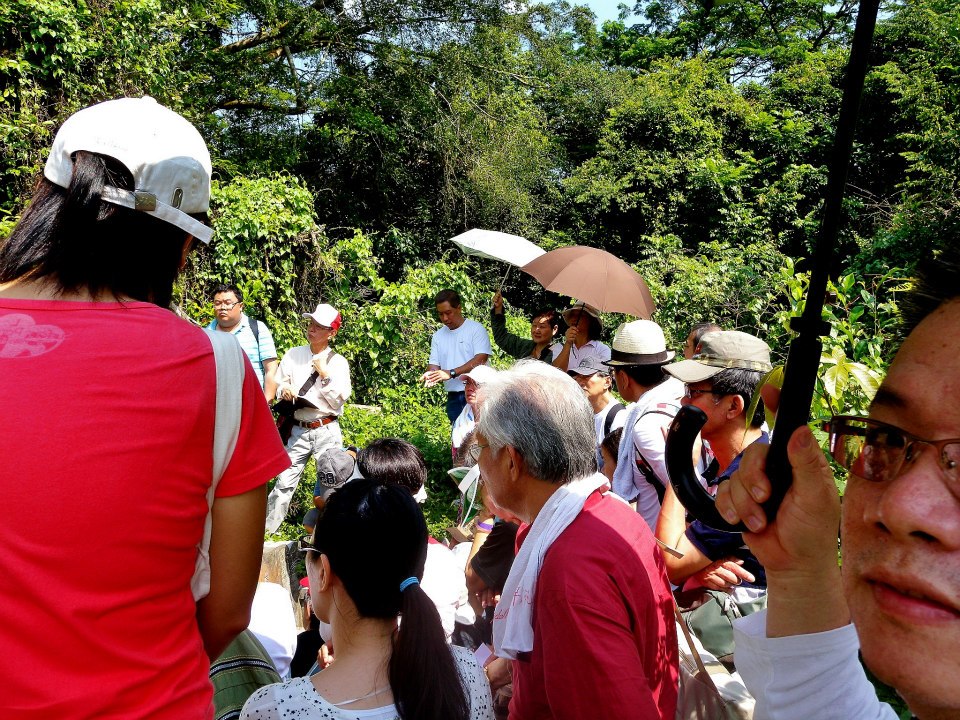
A tight squeeze around the tomb of Chio York Chiang which is unique in that it is inscribed with his and his brother’s, sons’ names on each of the tomb shoulders.(photo Ee Hoon )
Stop number 3 Tomb of Khoo Kay Hian and his third wife Lee Poh Neo, behind are his 2 older wives and watching over the cluster his mother. The first of the tombs on the tour which is staked for exhumation as it is in the way of the proposed 8 lane highway.
Stop 4 See Tiong Wah
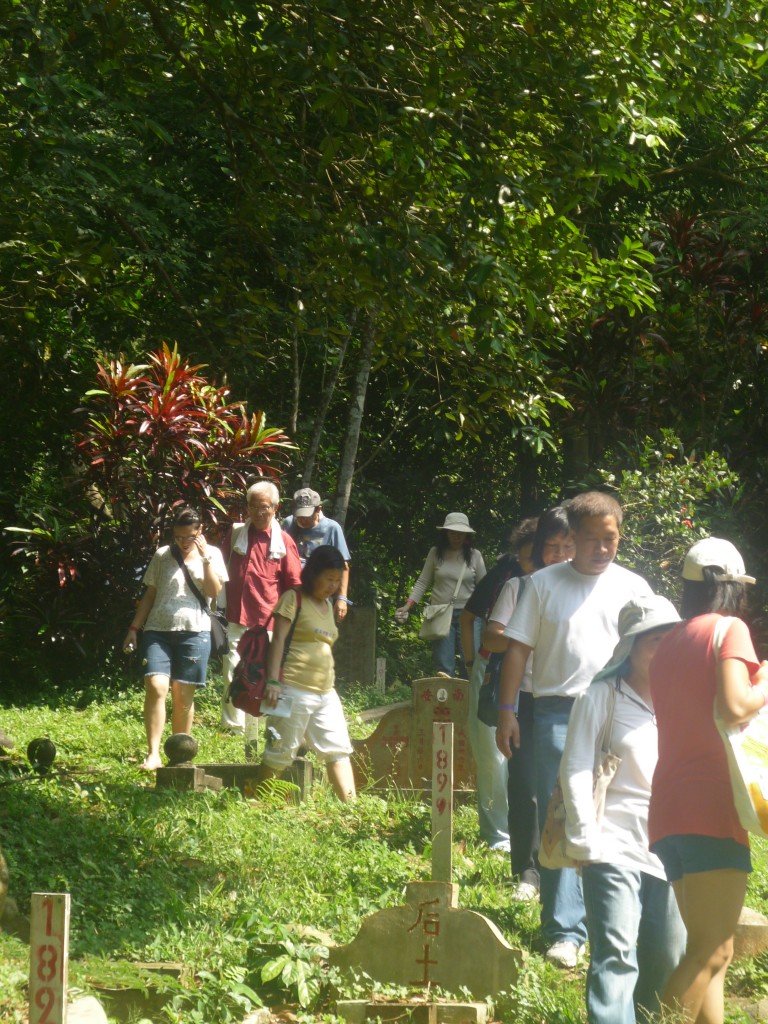
Making their way to See Tiong Wah cluster in a hill once known as See Tiong Wah hill because so many of his relations including his mother, wives and in laws are buried here. This cluster is also staked ( photo Catherine Lim)
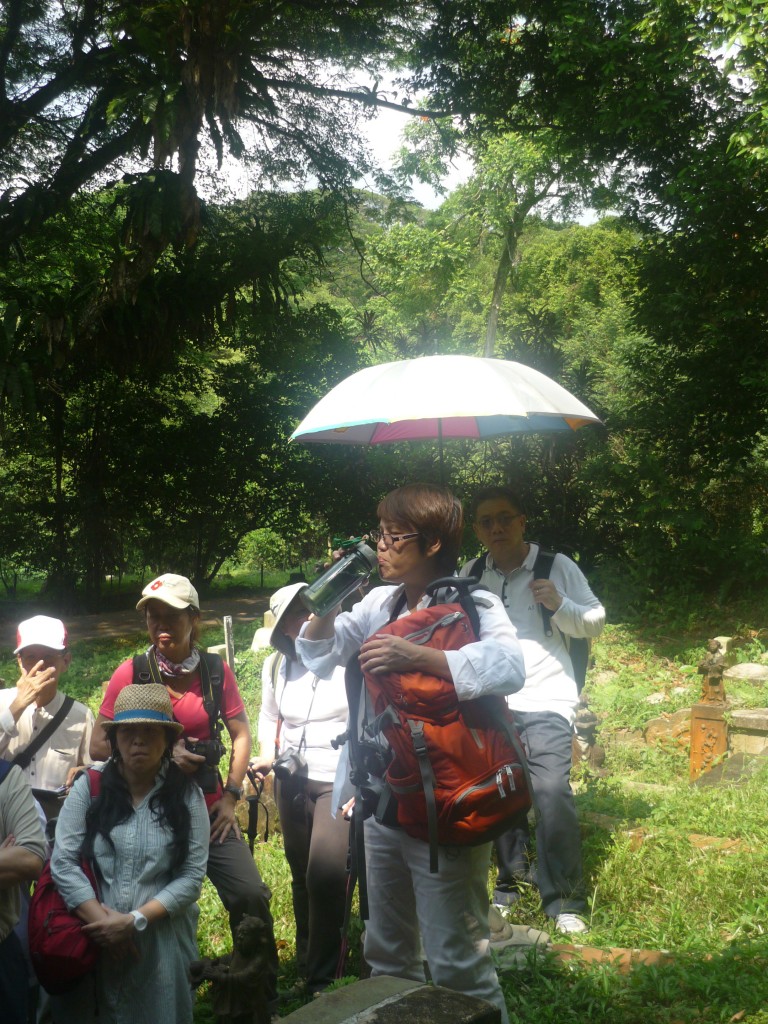
Ee Hoon takes a sip before launching into what she knows of See’s genealogy including his marriage to Khoo Seok Wan’s sister. ( photo Catherine Lim)
For more on See Tiong Wah, see here
The next stop 5, took participants up another part of Hill 2 into an overgrown tomb belonging to Boey Chuan Poh who built Wan Qing Wan

A sight of the tomb of Boey Chuan Poh, he is not a poor man but he has a really humble tomb, unmatched to his social status at that time.
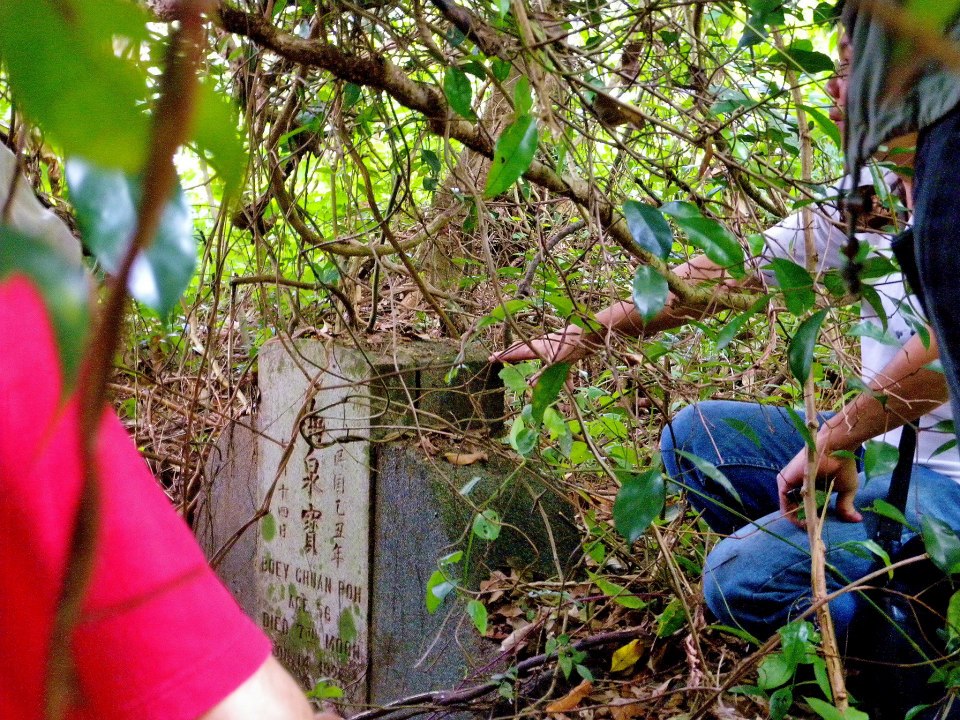
Boey barely revealed. Much ado about just who/what was Wan Qing Yuan named after, mother, wife or horse? Officially it is his mother (photo Ee Hoon)
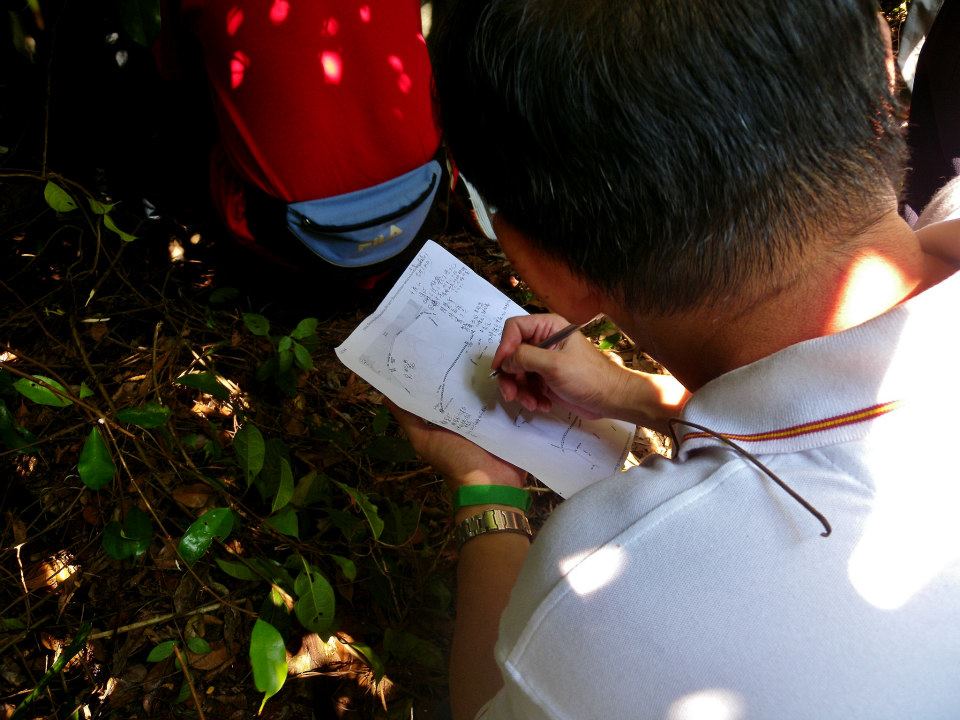
Much scribbling not just here where it was cramped but at all the tombs visited, We are expecting the tours at SYS to be much expanded as a result of this tour! (photo Ee Hoon)
Stop 6 Tan Chor Nam
Stop 7 Lim Keng Chiew

Lim was an early member of the Tongmenghui and the first secretary of its Singapore branch. He was so active in promoting the revolutionary cause that his shoe business suffered. But you say he left his footprint on the movement. He was one of the founders of the Ho San Kong Huay, a locality organisation for Hokkiens from the Ho San region in Xiamen. (Photo Ee Hoon)
Stop 8 Khoo Seok Wan

To Hill 4 and a grave marked by a hibiscus tree which always seems to be in full blossom (photo Ee Hoon)
Read about it here

A chance near where KSW tomb is located to study the LTA’s plans for he 8 lane highway and contemplate the stake tombs which are in the way, including Khoo Seok Wan’s (photo Ee Hoon)
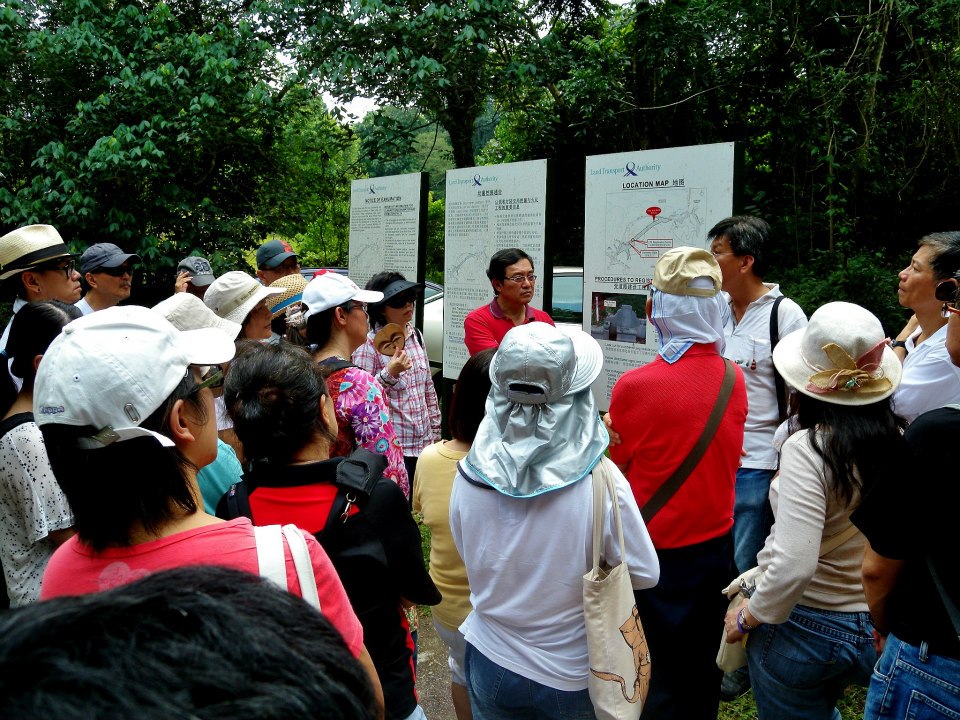
In fact when you see these boards in Hill 4, follow it, look for the hibiscus plant and it will lead you to KSW, ironic isn’t it? ( photo Ee Hoon)
Stop 9 Leow Chia Heng
For more on Leow, please click here

Nearly 5 hours later, still enough energy for one last cheer, for more tours to come (photo Ee Hoon)
Look out for Revolutionary Tours in October in English!
On Sunday 26 August, Nature Society of Singapore led a bird watching walk through Bukit Brown. Thanks to Cuifen, NSS member for compiling this album on highlights from the wal kwith additional photos from her fellow bird watcher, Leng Leng. Enjoy!
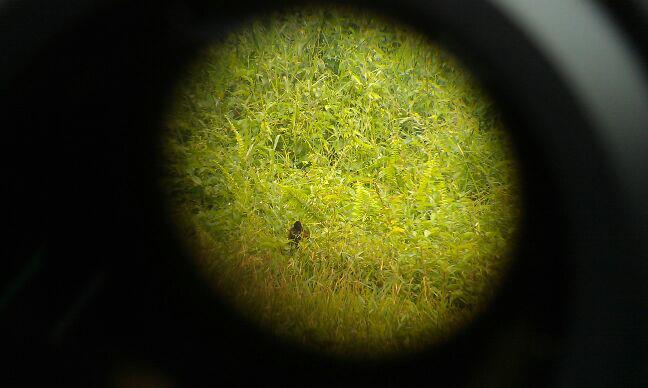
View into a scope. Lesser coucal spreading its wings, and sunbathing in the waterlogged fern area. The bird looks much clearer & closer when viewing directly into the scope (photo Cuifen)

Laced woodpecker sitting on a ‘nest’ of African tulip flowers. Photo taken by fellow bird watcher, Leng Leng.

With the Hungry Ghost festival on, maybe some pickings for the birds, after the “ghosts” have feasted of course (photo Cuifen)
RELATED POSTS:
Don’t miss this video of a nightjar and its nestling! Here’s one of woodpeckers.
Birds, Flowers and More – this shows you not only the real birds and flowers but the tomb decorations depicting birds and flowers
Here’s a look at a pangolin
FOR PREVIOUS NSS WALKS:
A Nature Ramble – this helps identify some plants at Bukit Brown
Beyond Grave Matters – this is a beautifully written commentary and event report by Rosalind Tan, whose ancestors lie at Bukit Brown
NDP @ Bukit Brown
by Martina Yeo
As Singaporeans gather at the floating platform or Esplanade area to celebrate the nation’s 47th birthday, a group of some 70 celebrated this occasion together with the “Nation’s Deceased Pioneers” at Bukit Brown. As people gathered around at the round-about area, a flag of the nation was hung up on one of the rainforest trees.
After a brief introduction of Bukit Brown by Catherine, participants were handed a NDP goody bag each. After all, what’s an NDP celebration without goody bags? The goody bag was uniquely Bukit Brown and filled with symbolic meanings.
It contained an ice-cream stick with a number written in red (symbolizing the graves affected by the 8-lane road), a packet of instant coffee (symbolizing the name that Bukit Brown was popularly known by, Kopi Sua or Coffee Hill), a candle (for participants to offer to any grave), a box of matchsticks (for lighting the candle and which symbolizes one of the Bukit Brown pioneers, Lee Kim Soo’s story from rags-to-riches), “Eagle” brand medicated oil (which is a brand successfully build up by Tan Jim Lay a grandson of Tan Quee Lan), and a party popper (which symbolizes the five-coloured paper which is laid out when descendants visit their ancestors’ graves during the Qing Ming Festival as an act of remembrance).
Look at the smiling faces of those participants who were the first to guess the names of those who were buried in the graves that correspond to the number on the ice-cream sticks they received! They each won a Bukit Brown T-shirt.
Clare then led the excited participants for a tour to visit some of the pioneers. Some seemed unable to contain their excitement when they saw a hanging branch.
Amongst the pioneers, participants visited the graves of Mr. & Mrs. Tay Koh Yat, Mr. Lee Kim Soo, Mr. & Mrs. See Tiong Wah, Mr. & Mrs. Khoo Kay Hian, Mr. Khoo Kay Hian’s mother and Mr. & Mrs. Tan Yong Tian.
After a short tour to some of these graves, the participants went back to the place under the Ole rain tree for a buffet. While some were making new friends and enjoying the food, others played with the dogs, patted the horse or took turns to hold the flag and took a photo with it.
More games followed. Those who managed to answer the quiz questions correctly were smiling from ear-to-ear as they received their prize of painted tiles.

The tiles donated by Victor Lim were collected from old houses and can be found at Bukit Brown which is also the final homes for the departed (photo Martina Yeo)
Participants then sung the national anthem and said the pledge as one voice. Of course, like other NDPs, there was also the “fly-over,” but at Bukit Brown, participants folded their own paper planes using papers printed with the national flag and “flying” it using their han
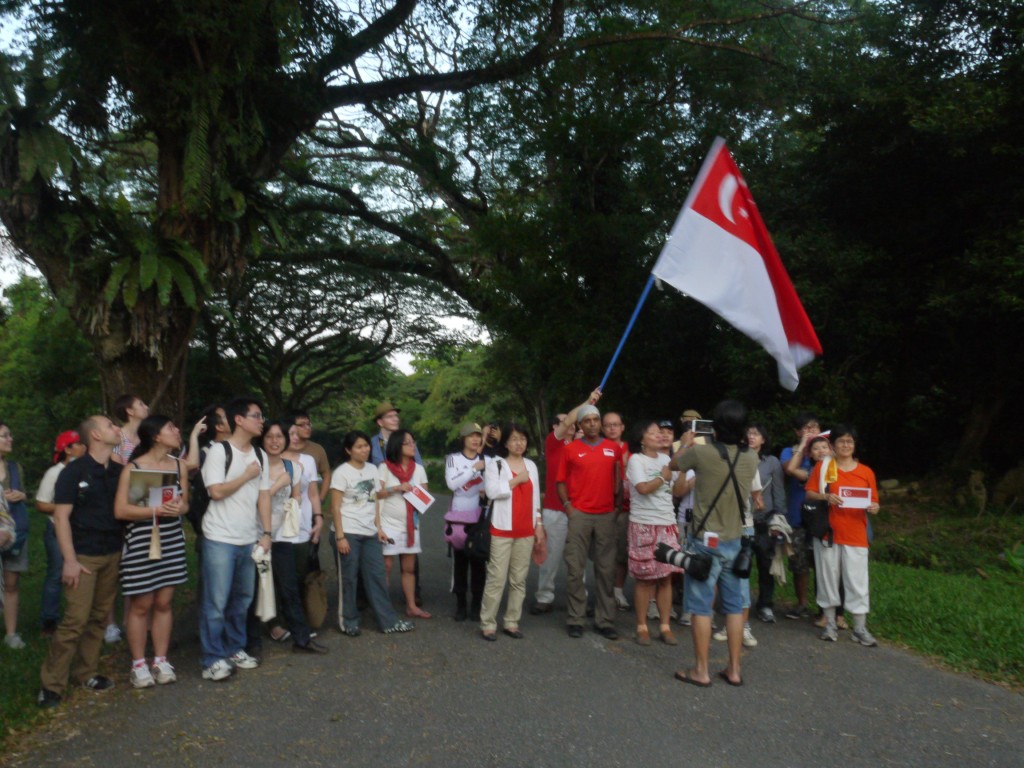
Singing the National Anthem followed by the recitation of The Pledge marked a high point in the celebrations (photo Martina Yeo)
Many continued to stay on to watch the sunset, learn yoga from Bala, watch monkeys jumping from one tree to another, sing along with others or simply to enjoy the atmosphere of the place.

“So we bid you goodnight, in one last flickering light, till we meet again my friends, we hold each other in our hearts” (photo Claire Leow)
About Martina Yeo who documented this for us:

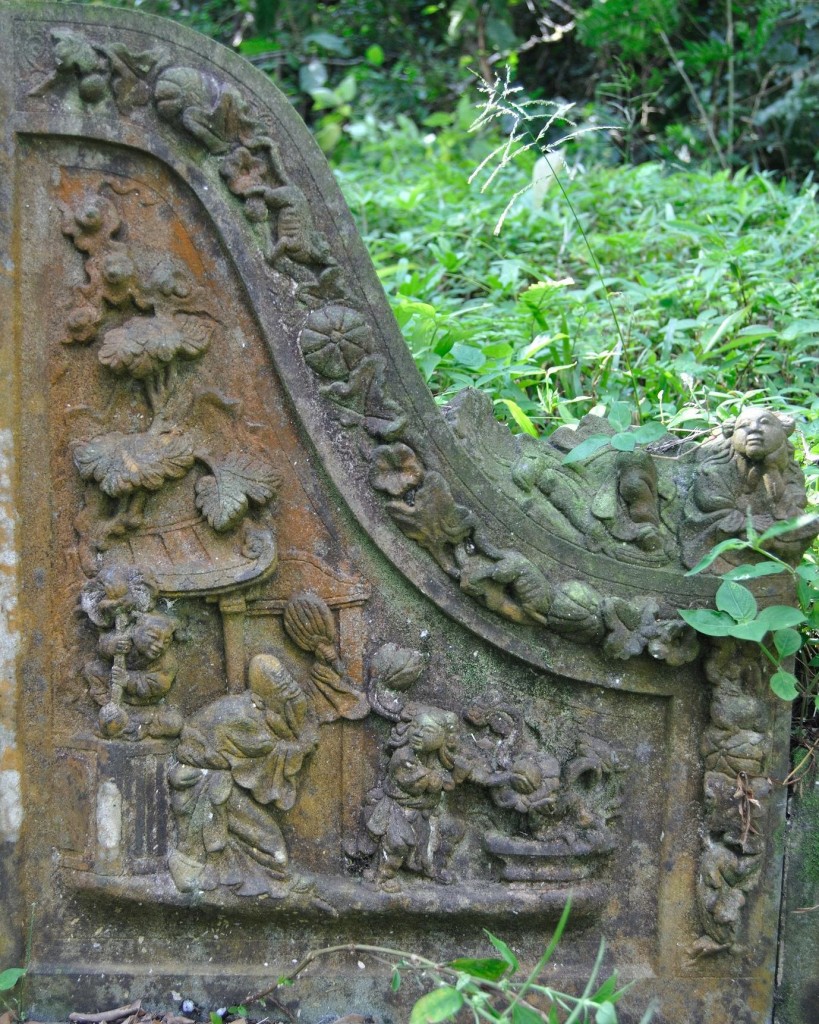

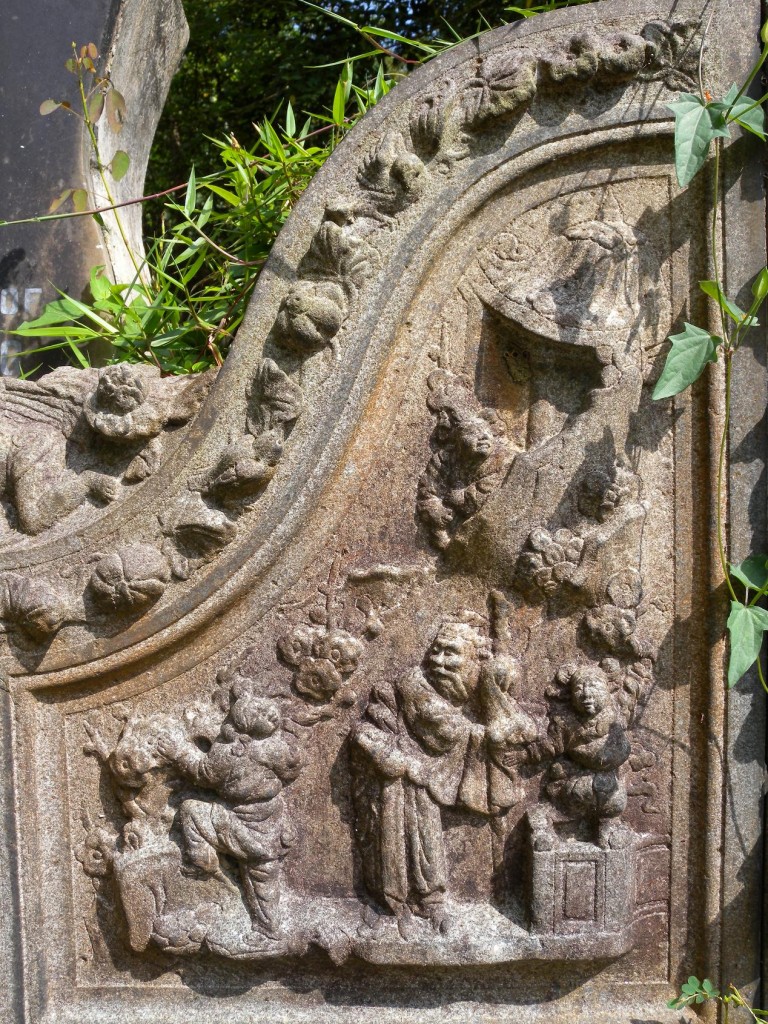

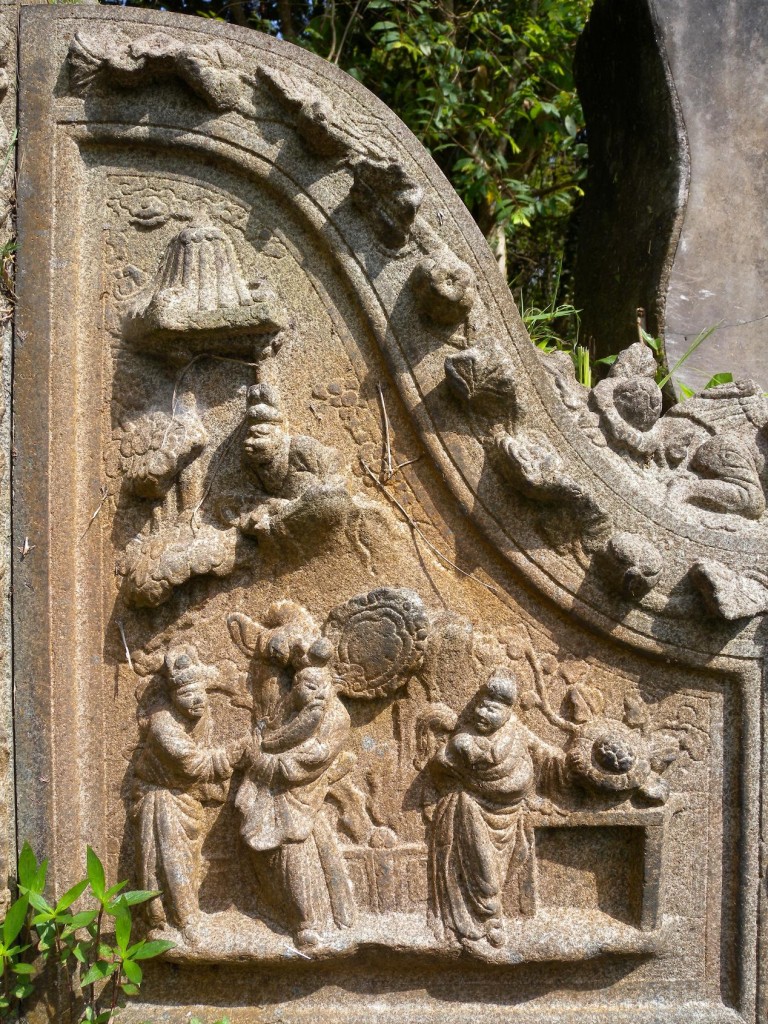


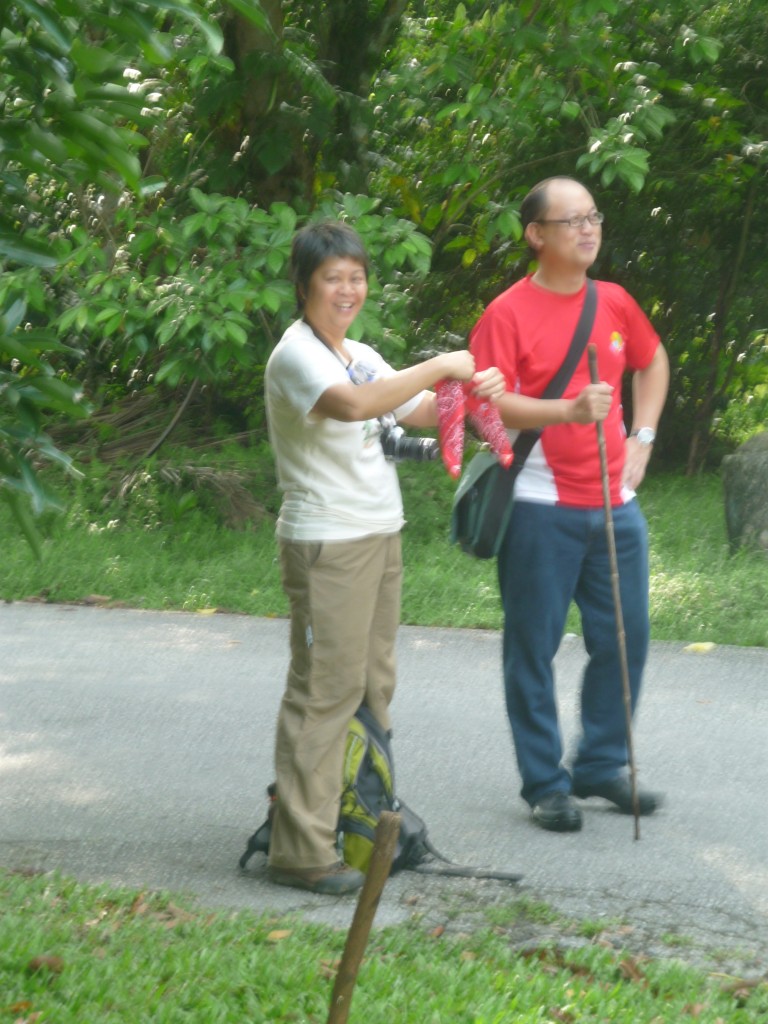

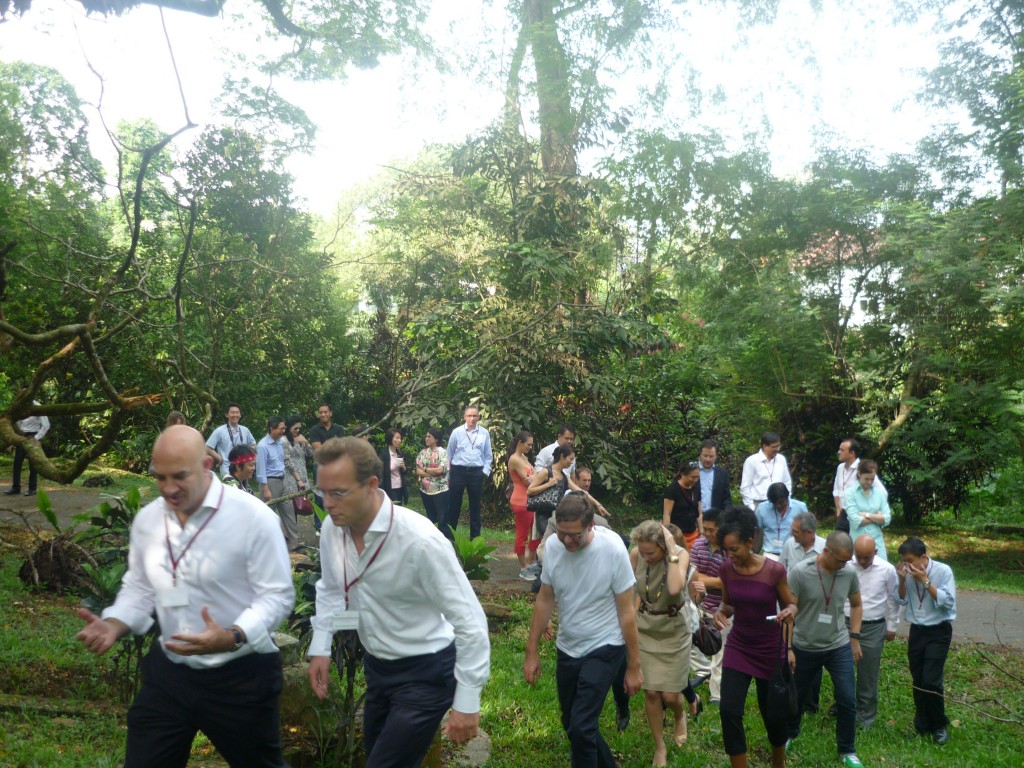
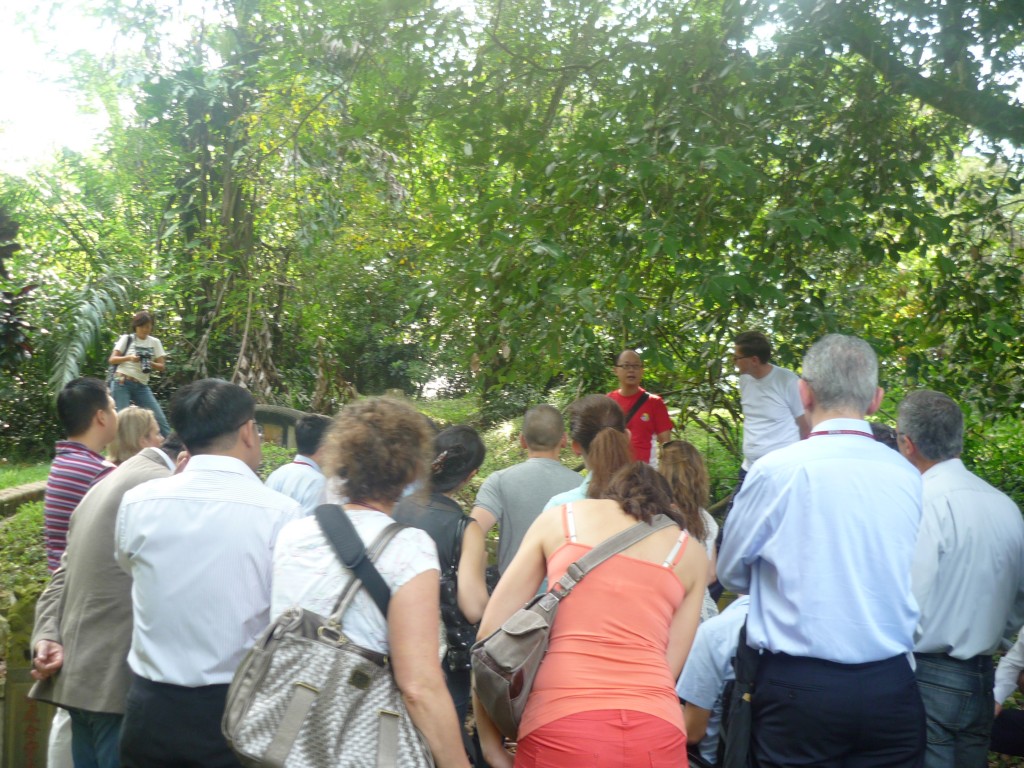


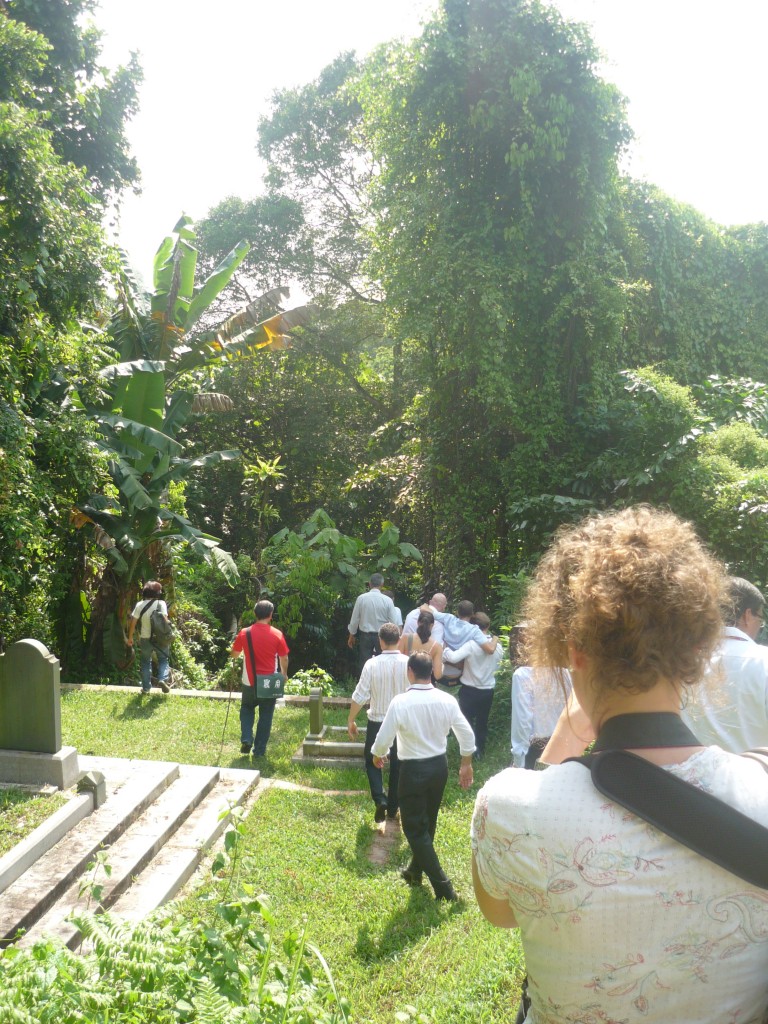

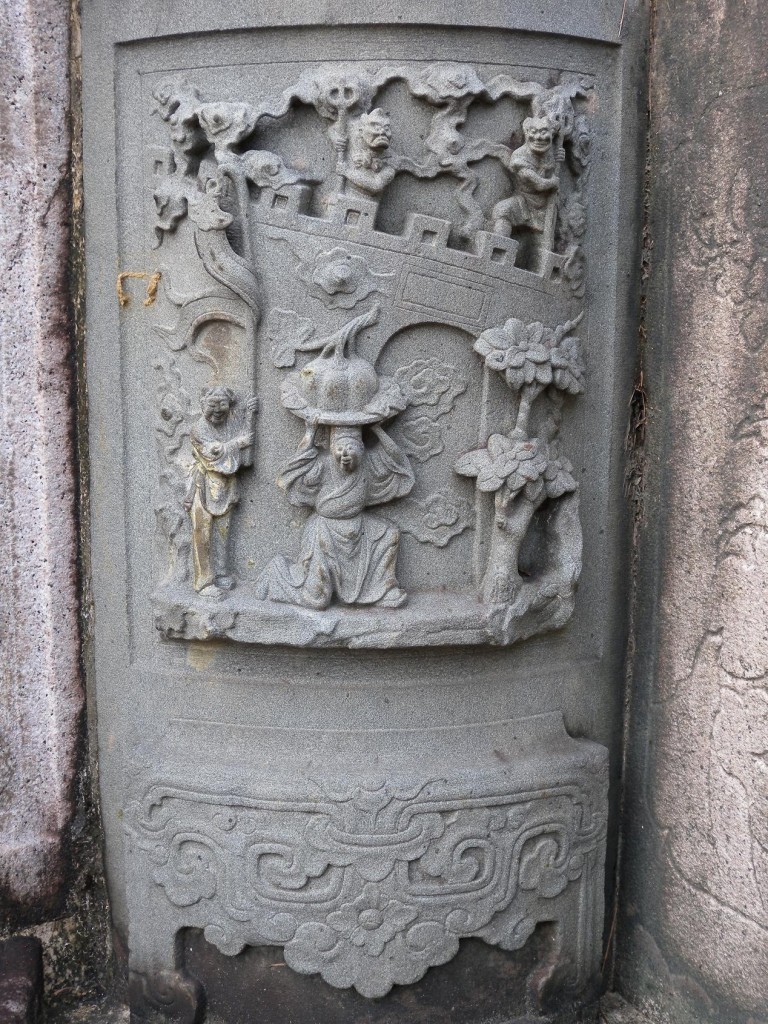
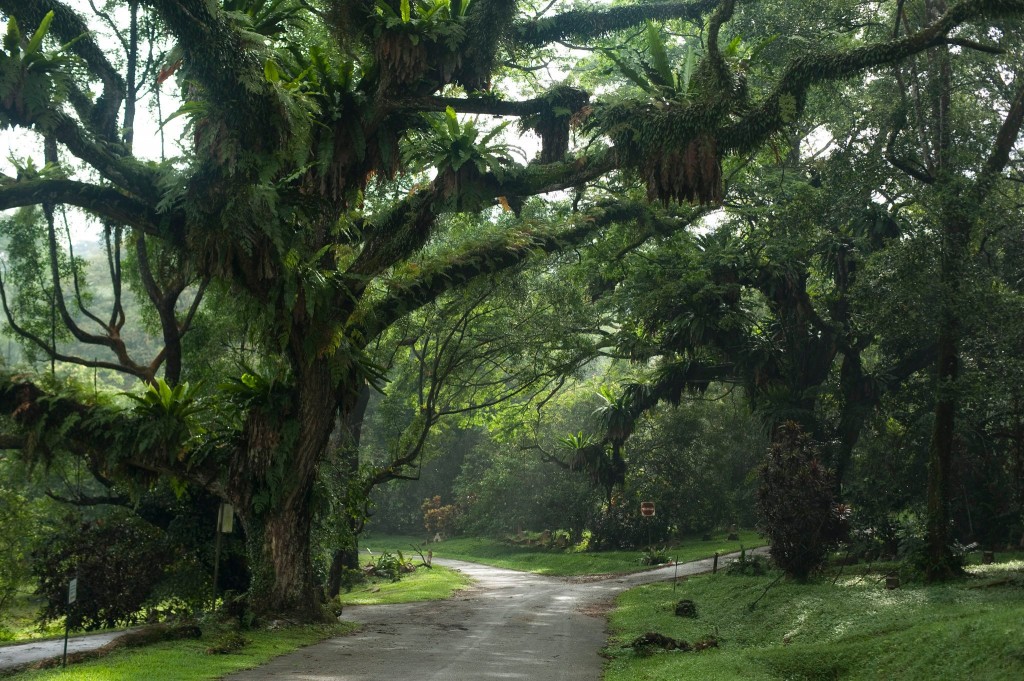
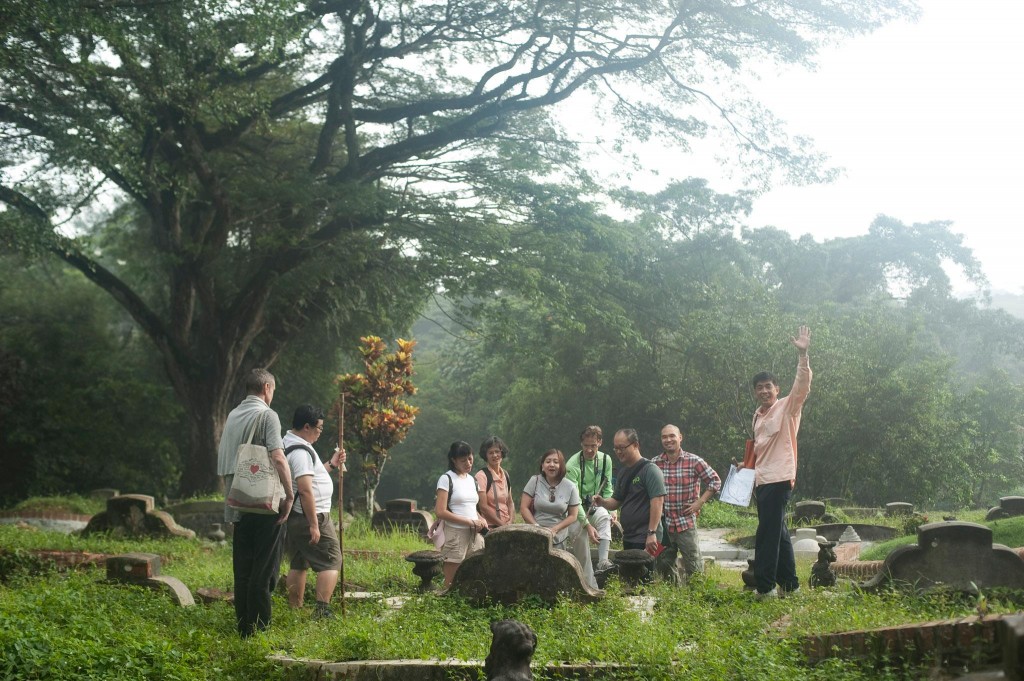
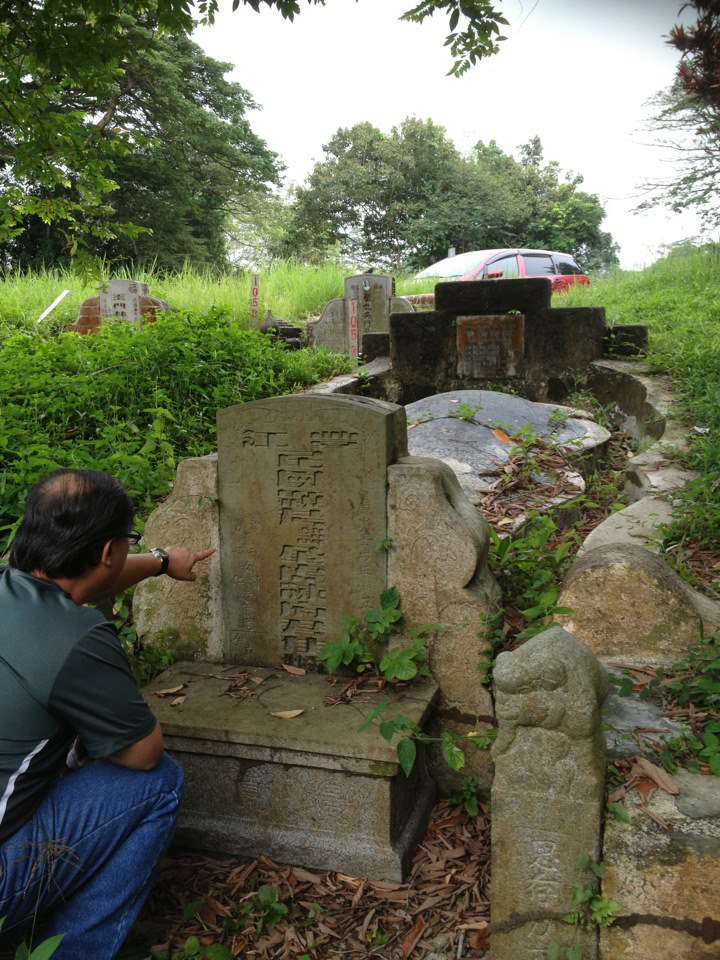
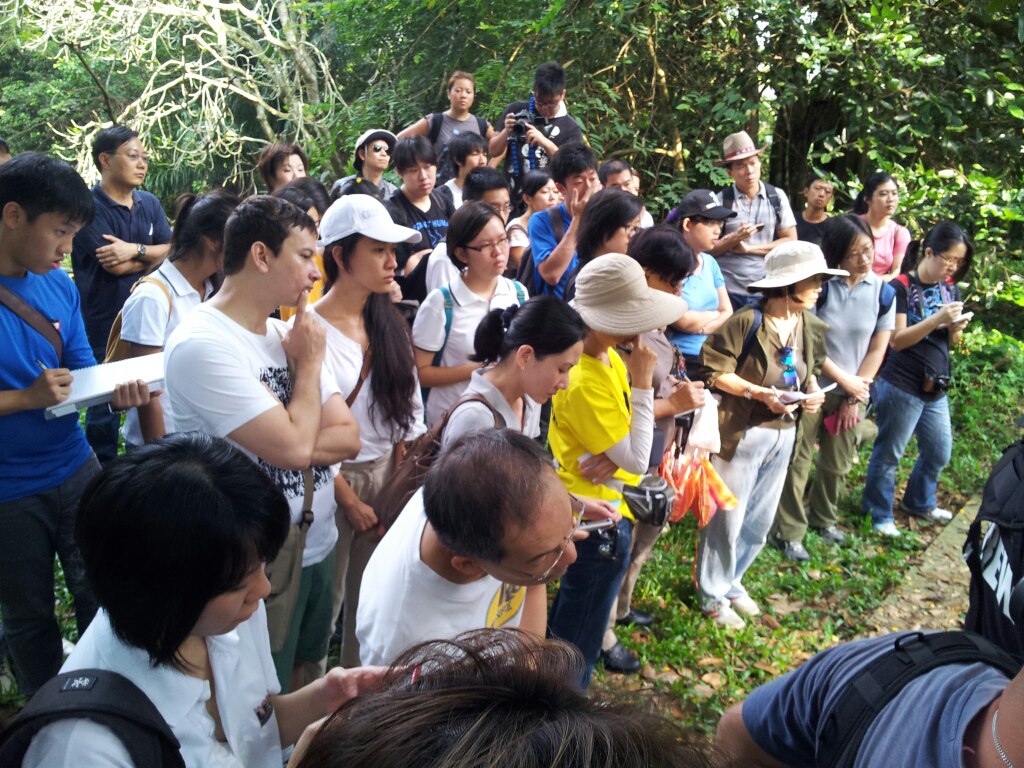

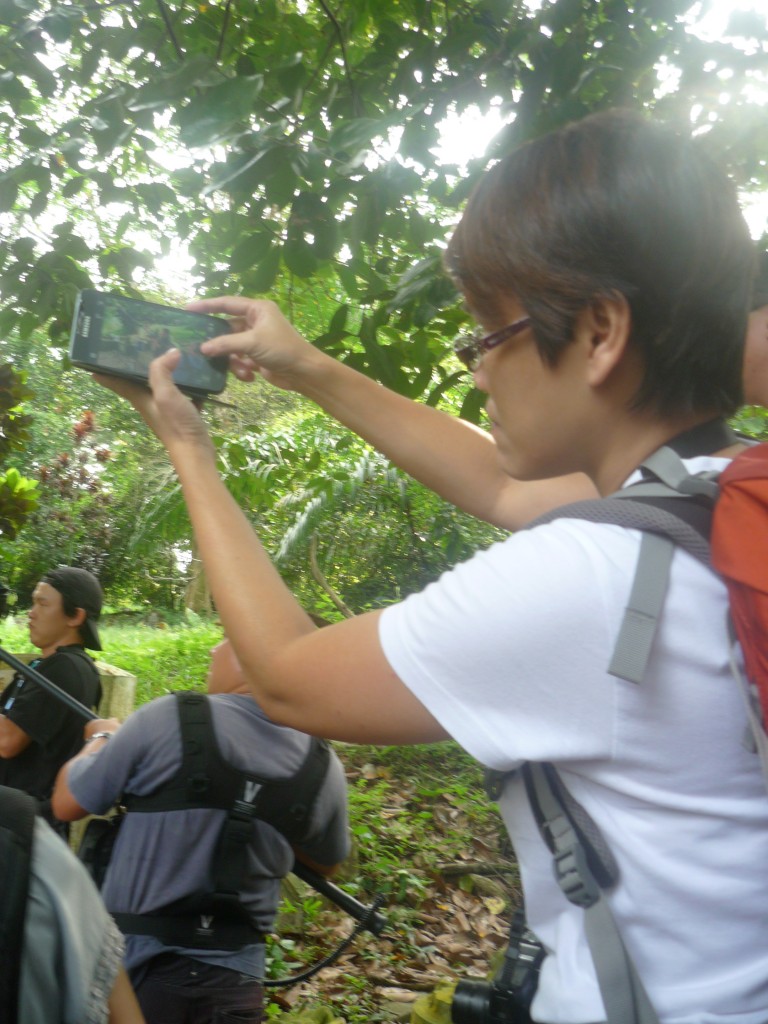
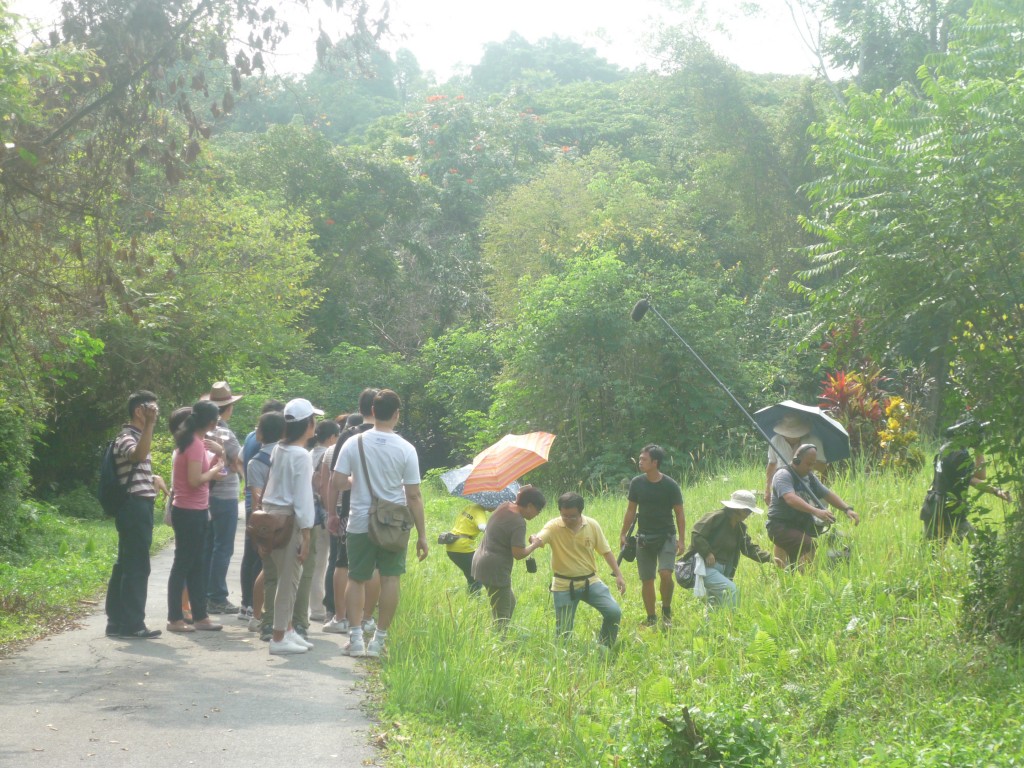

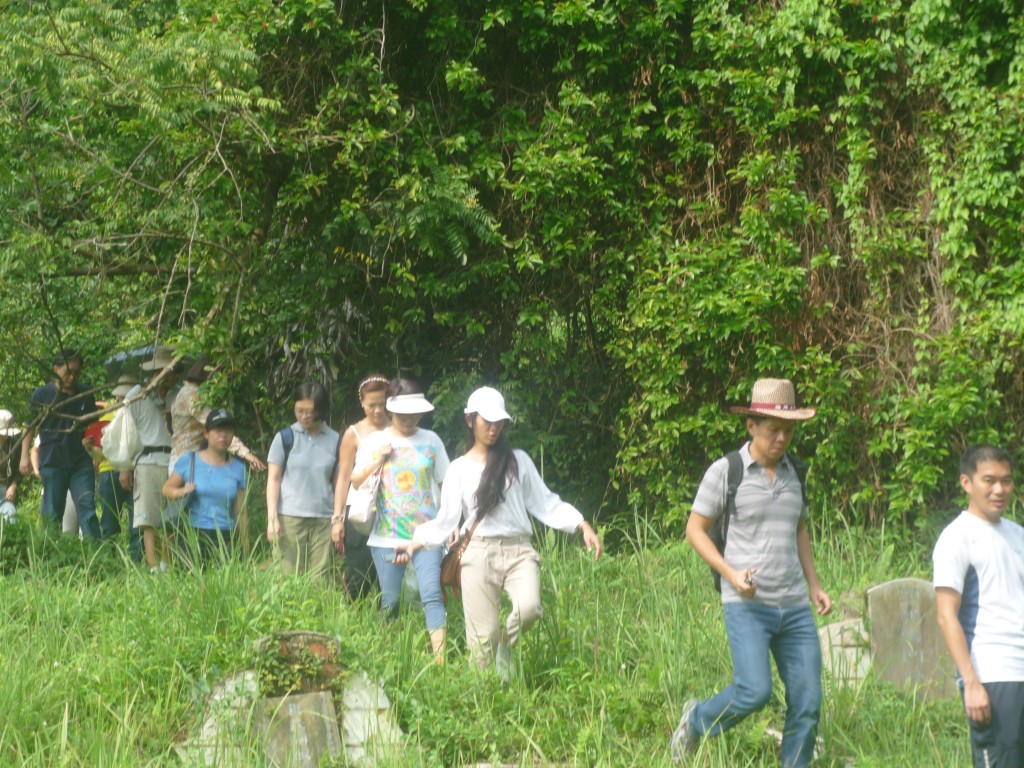
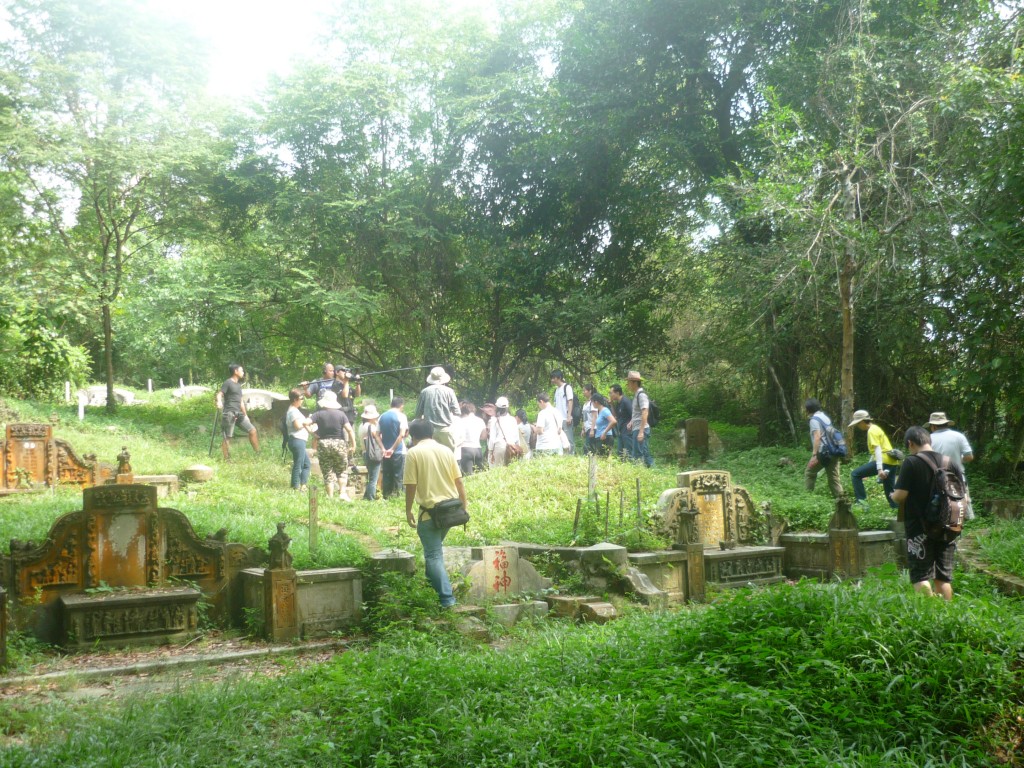
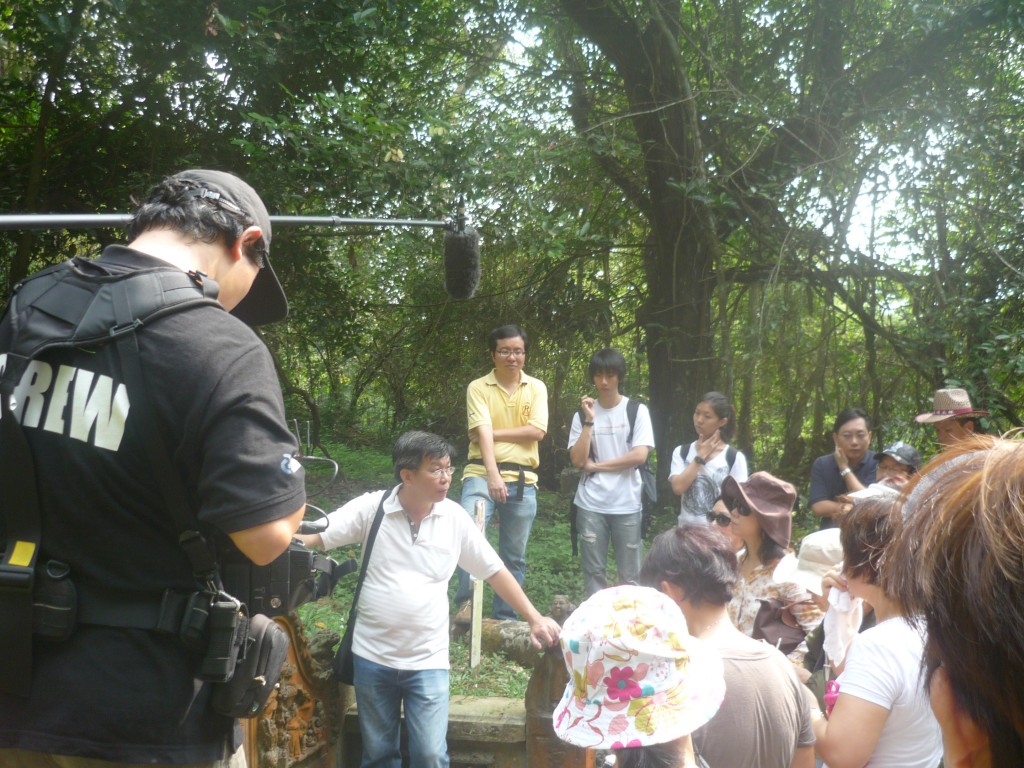


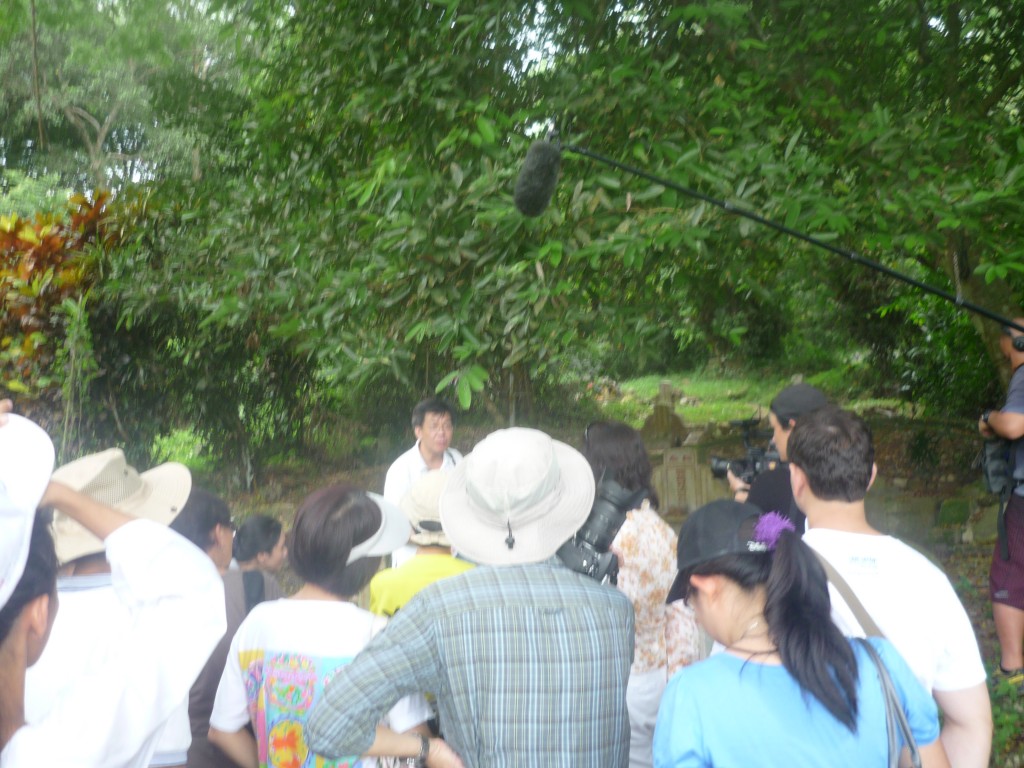

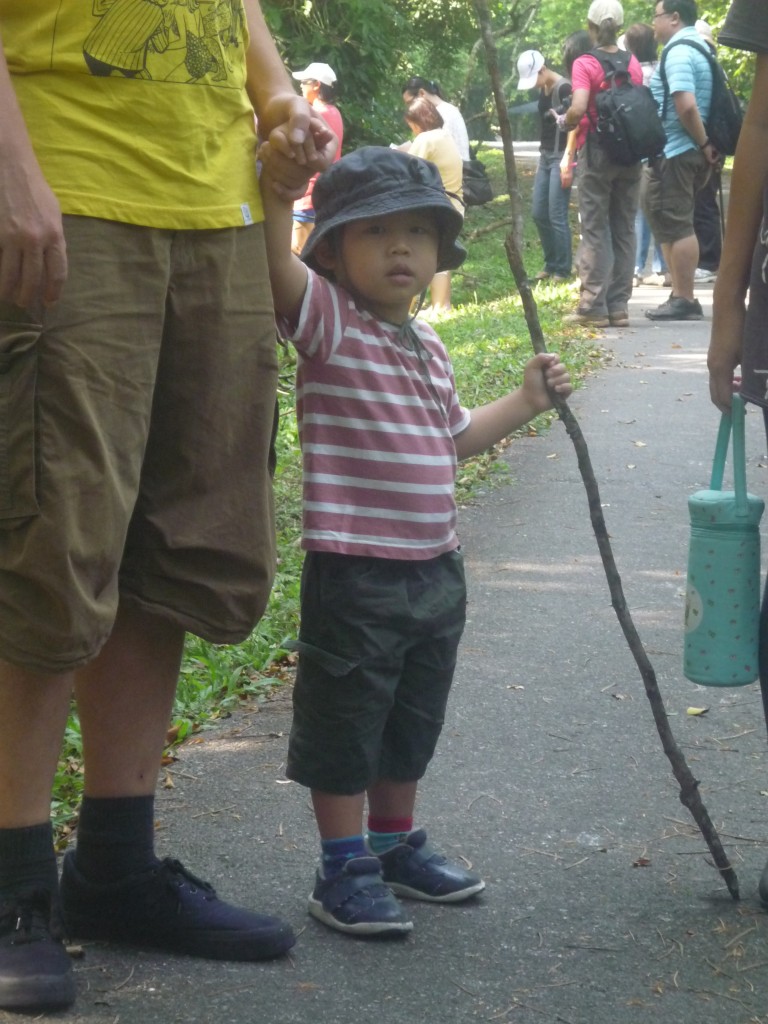
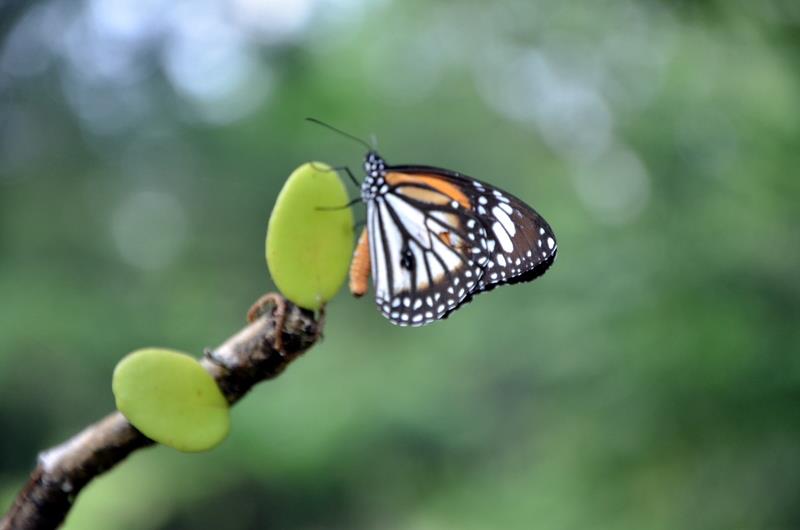


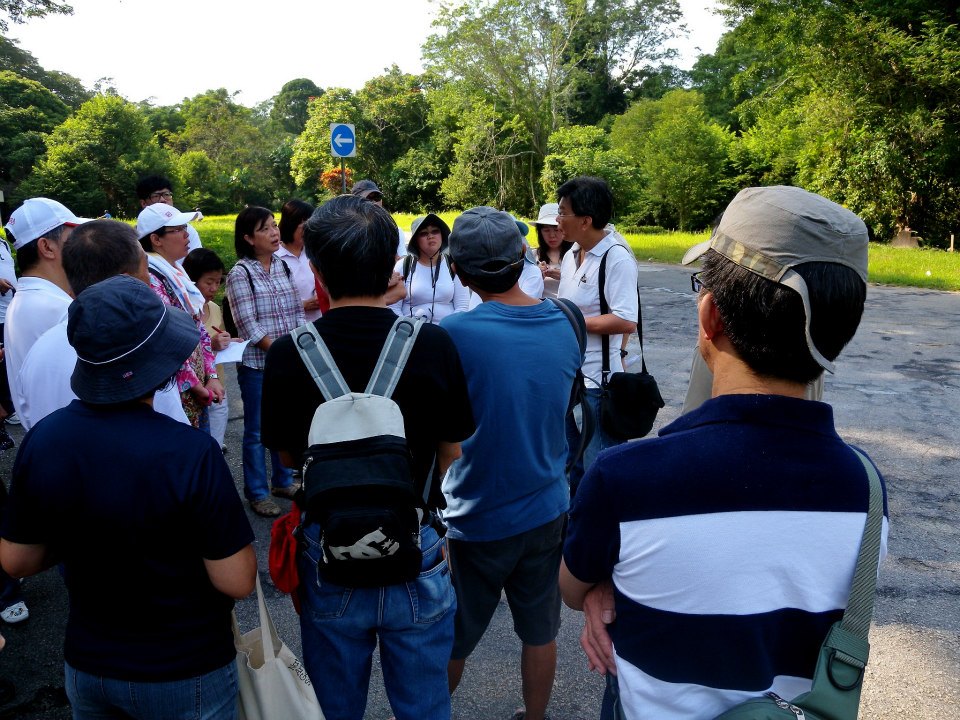
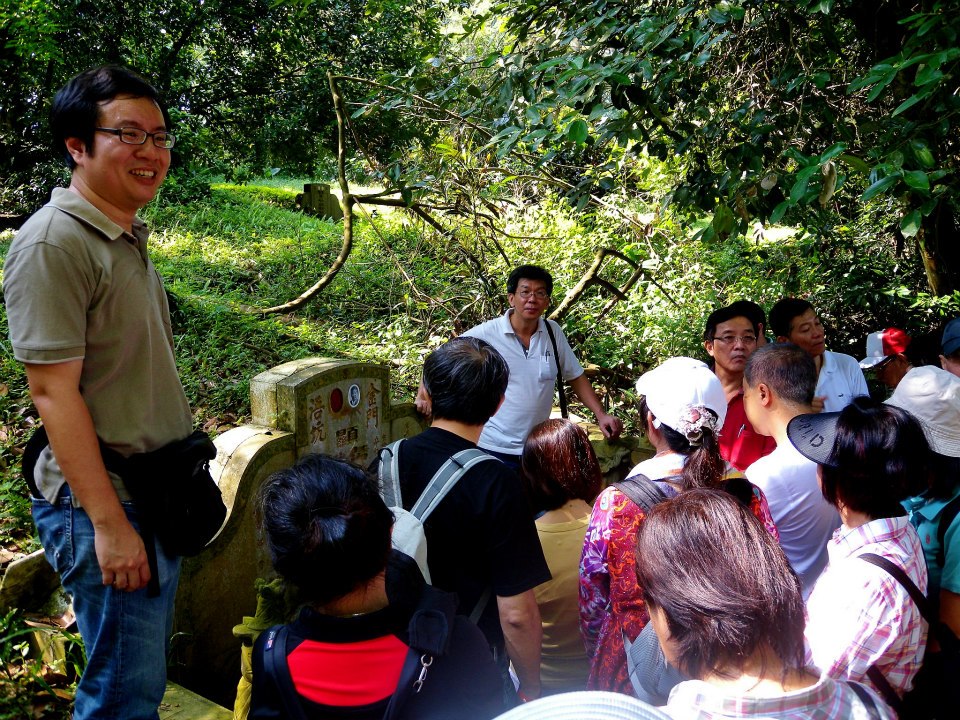
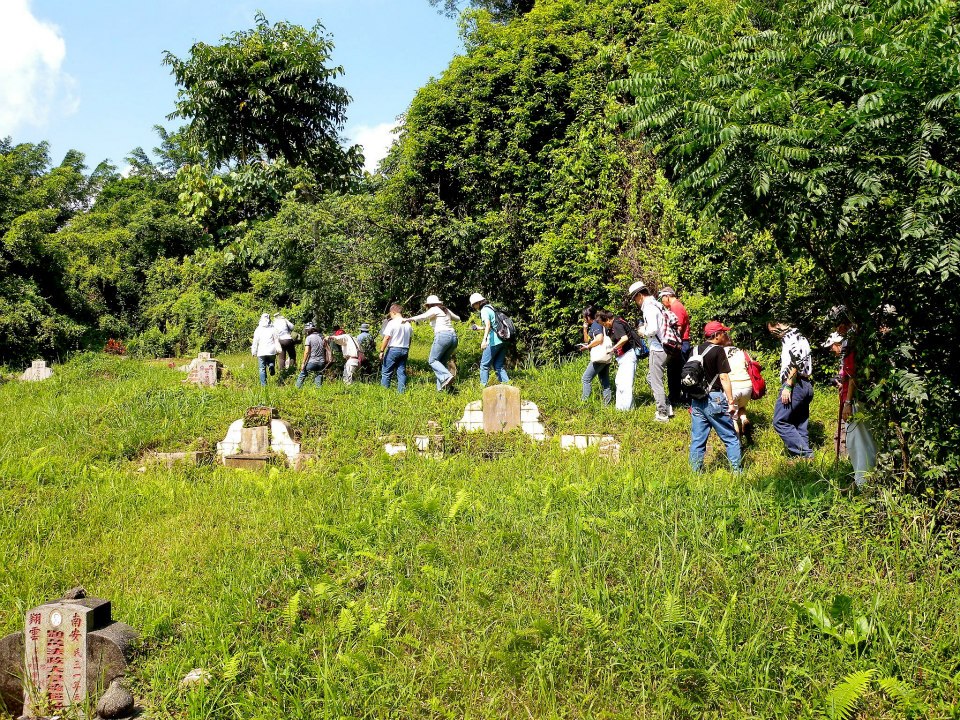
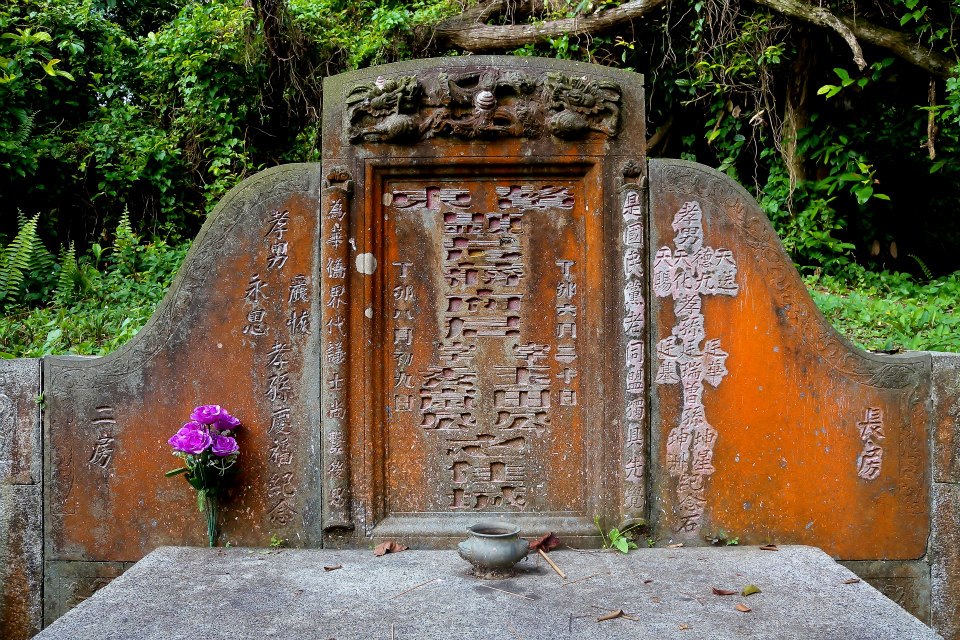
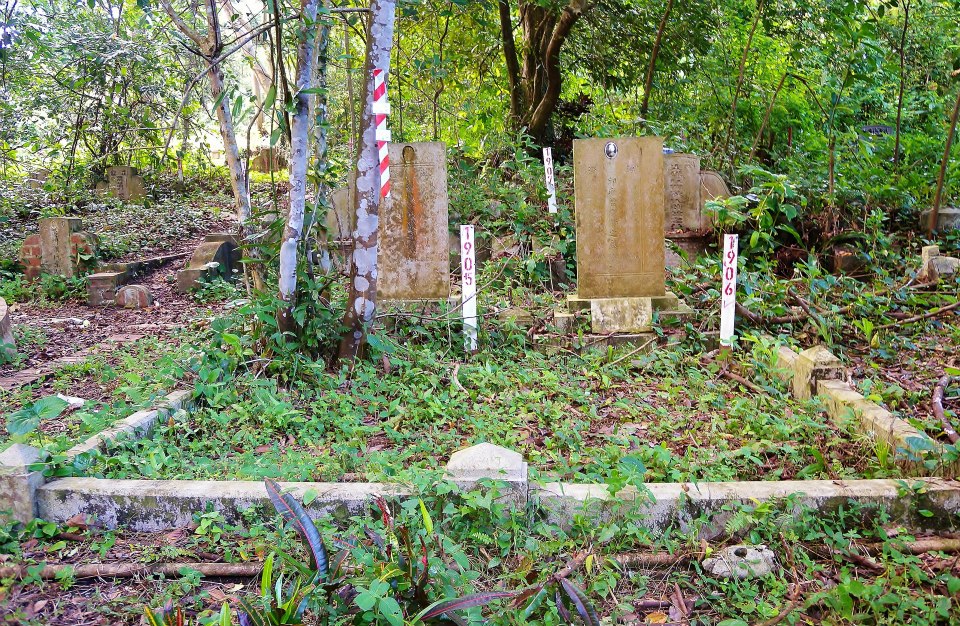

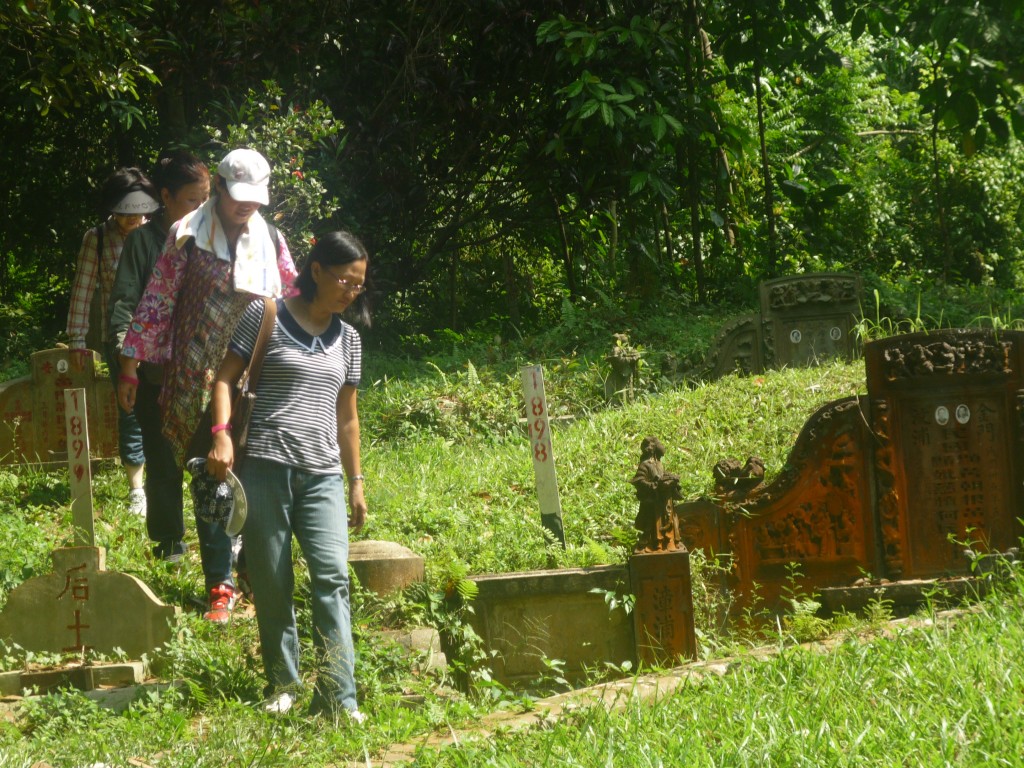
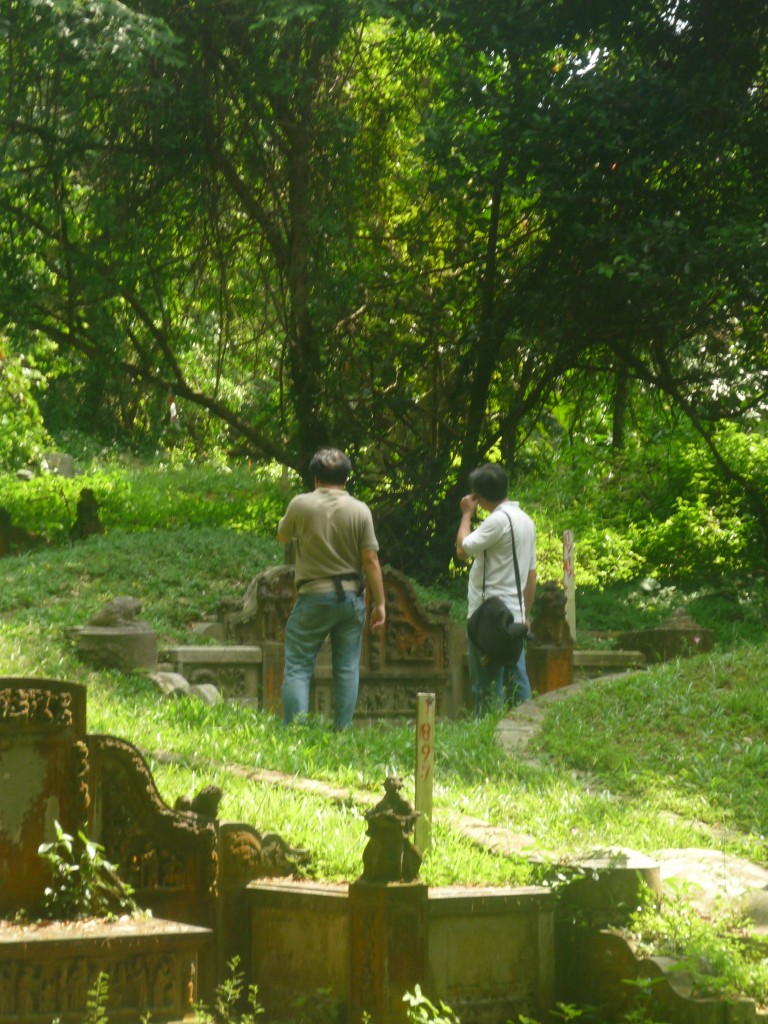
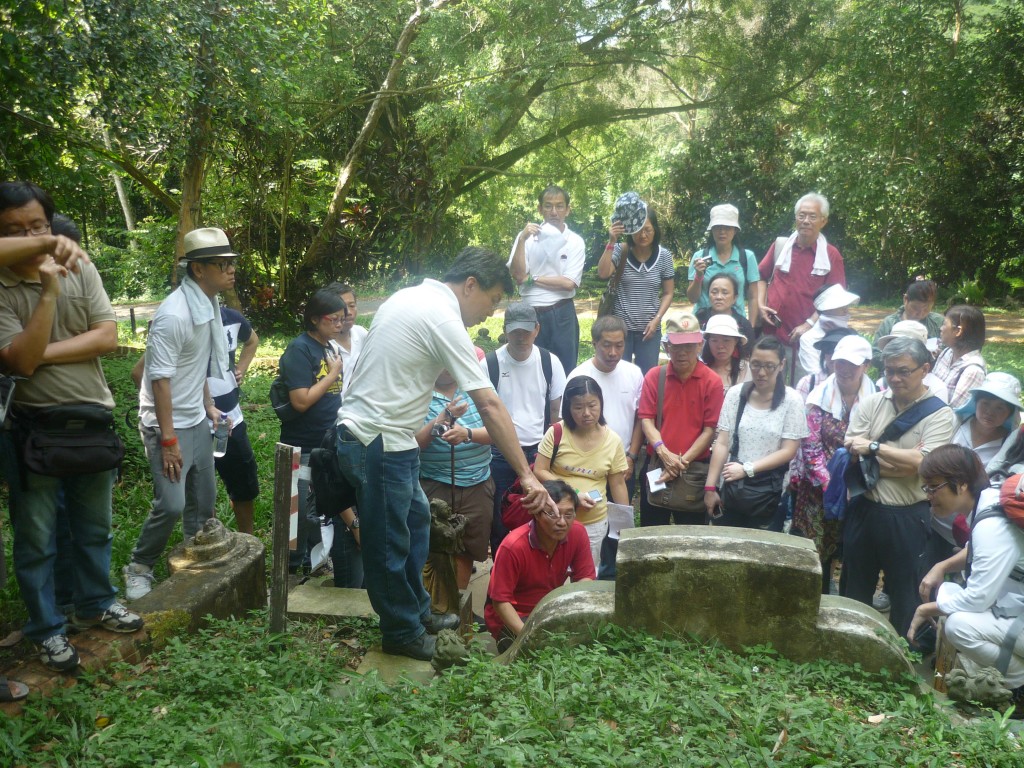
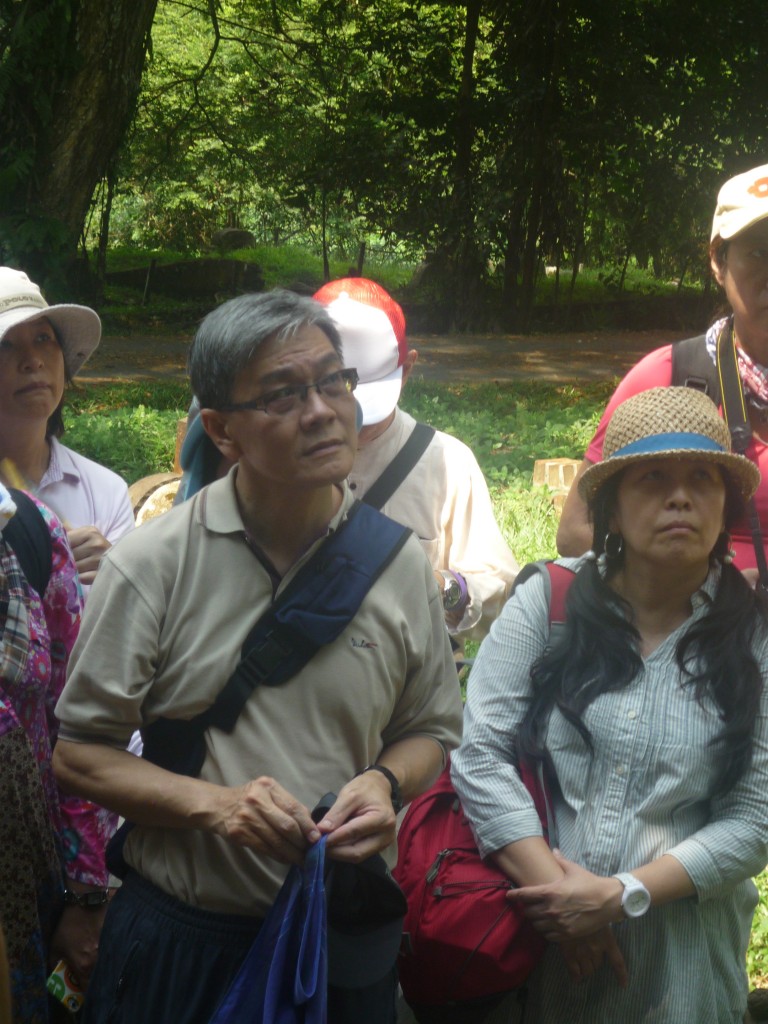
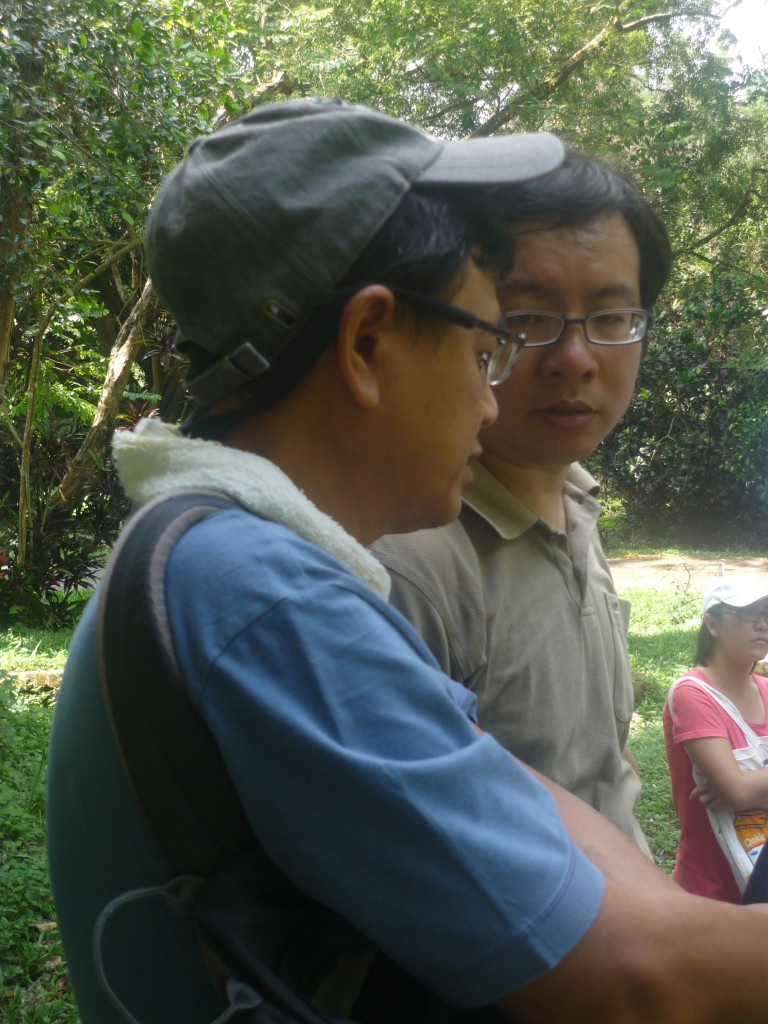
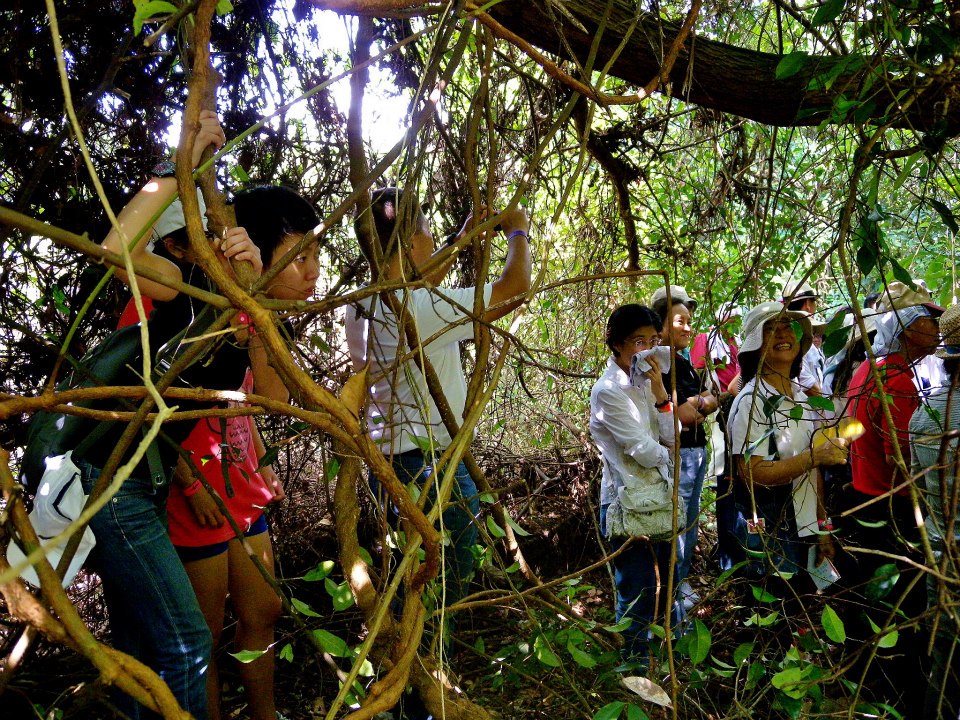

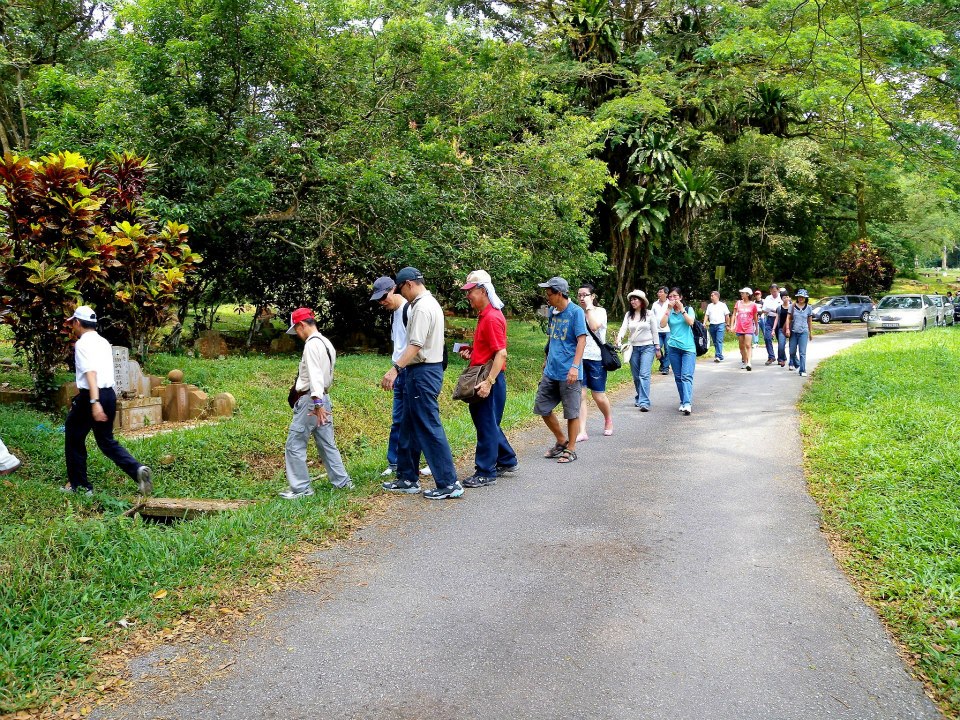
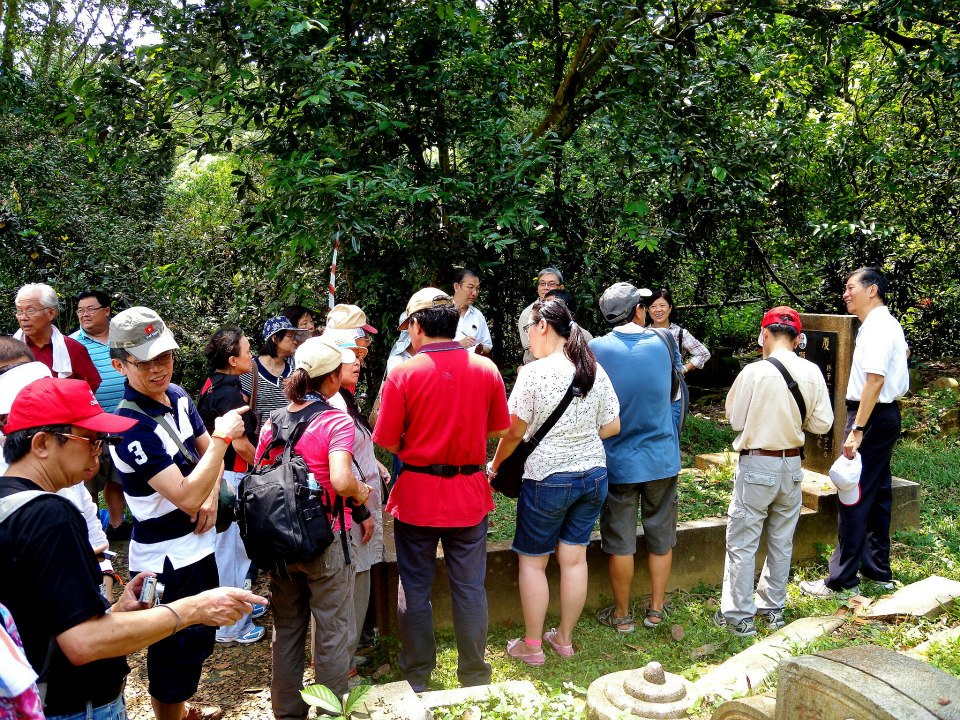
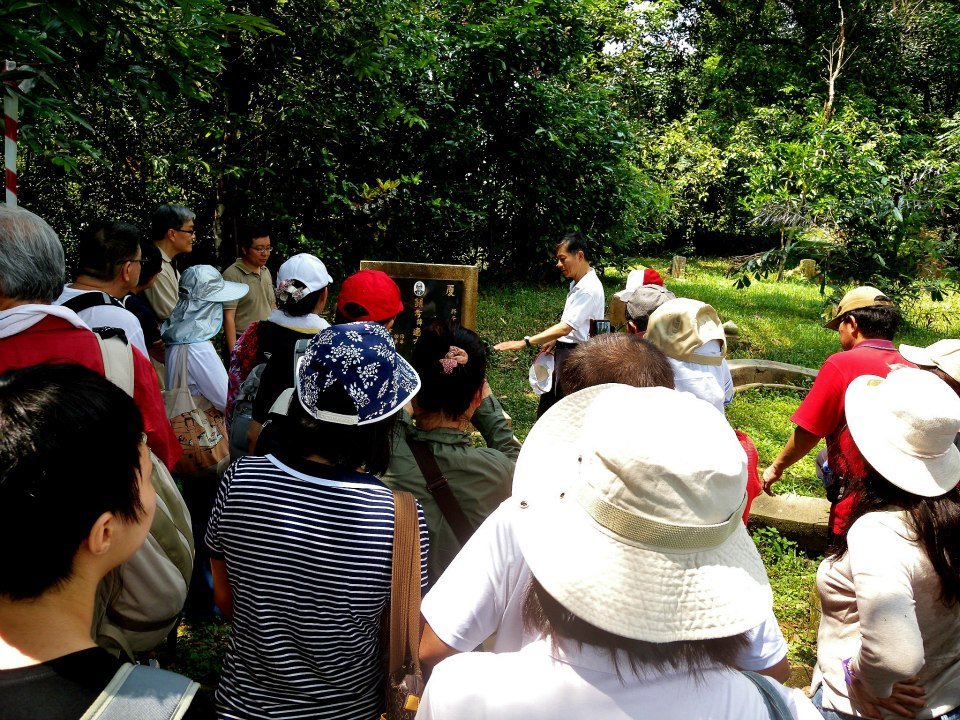


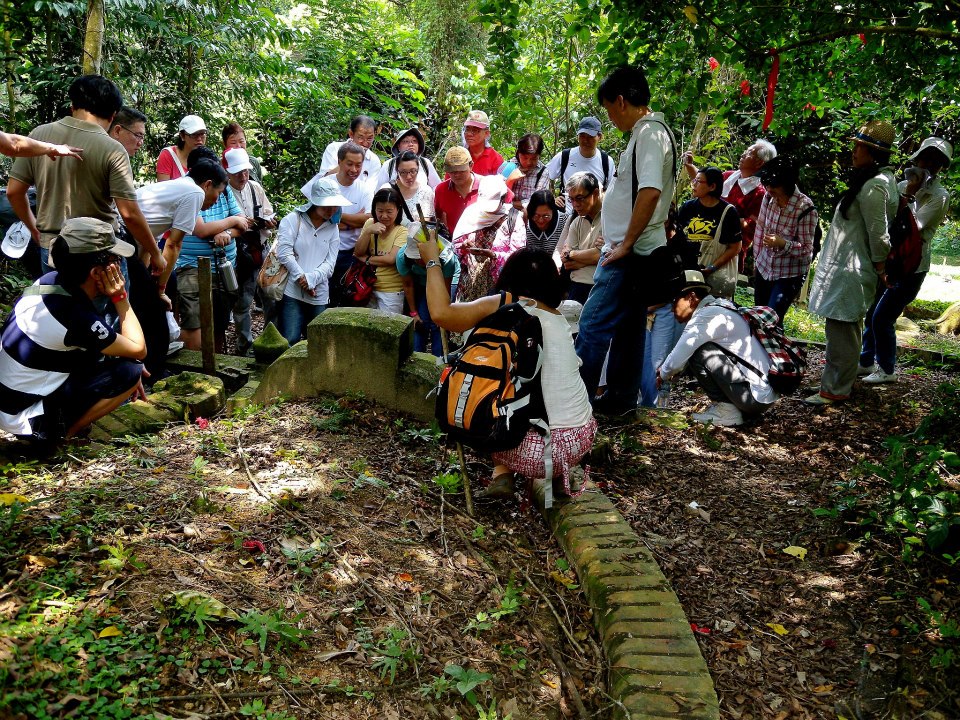
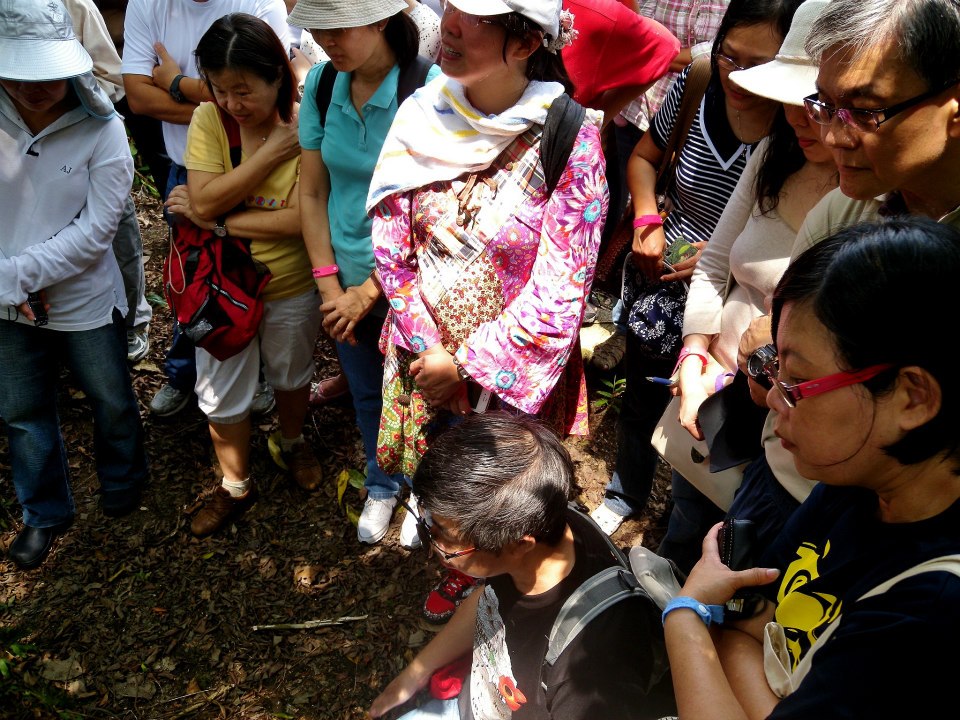

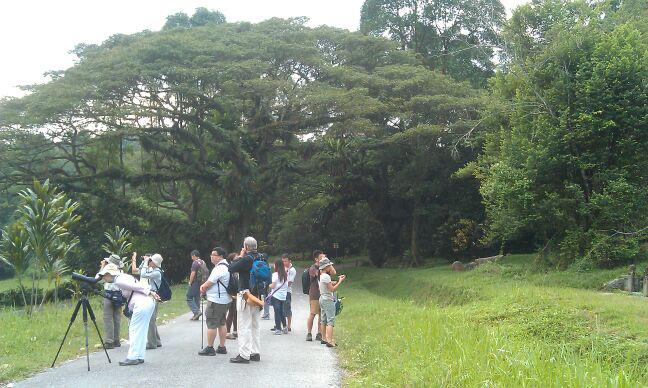
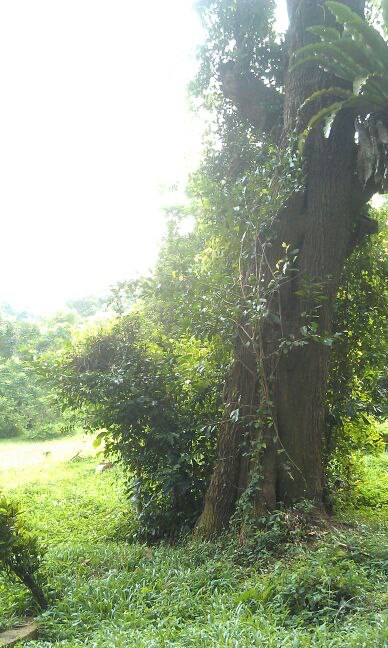
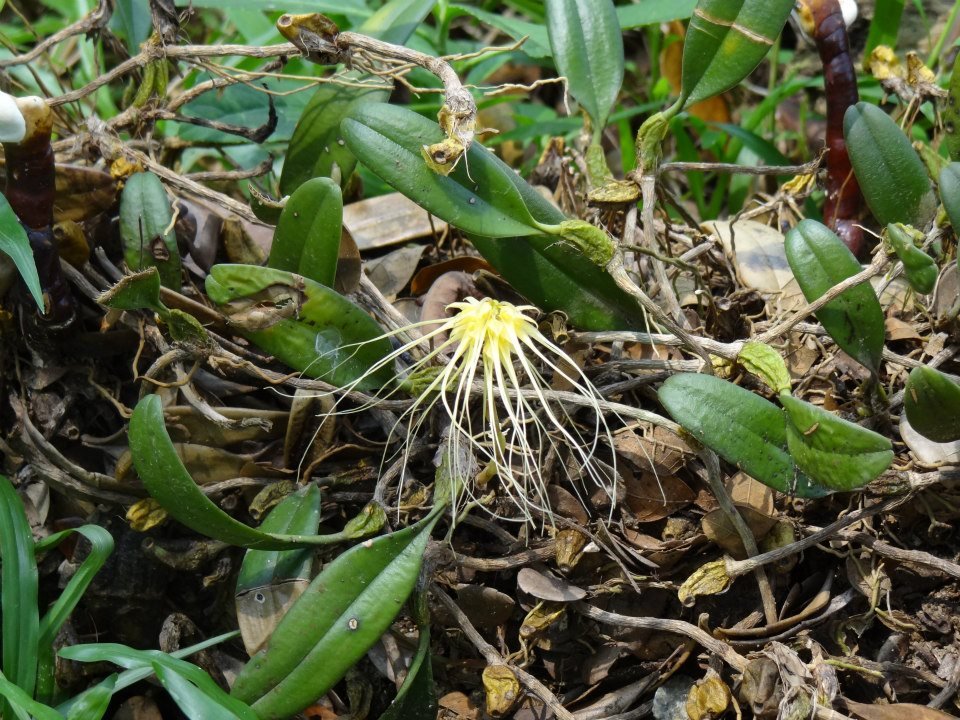
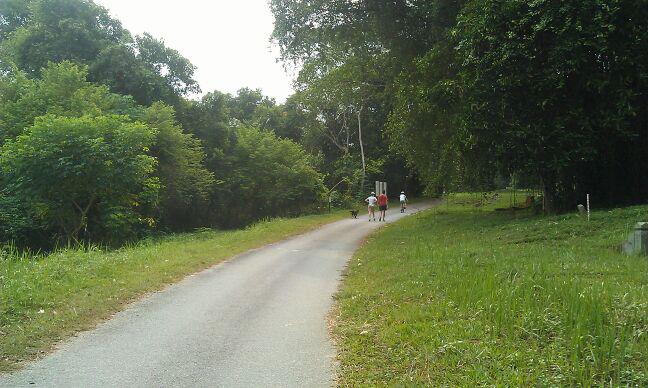
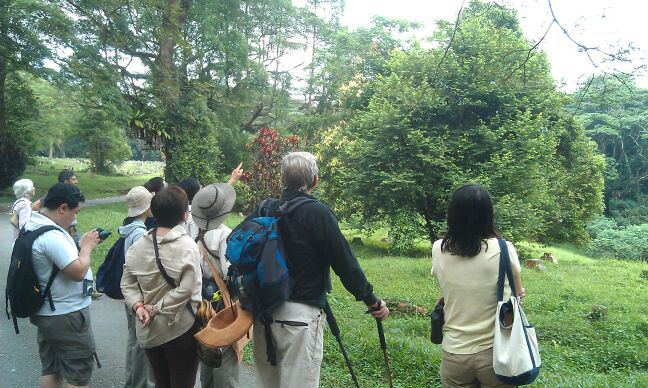

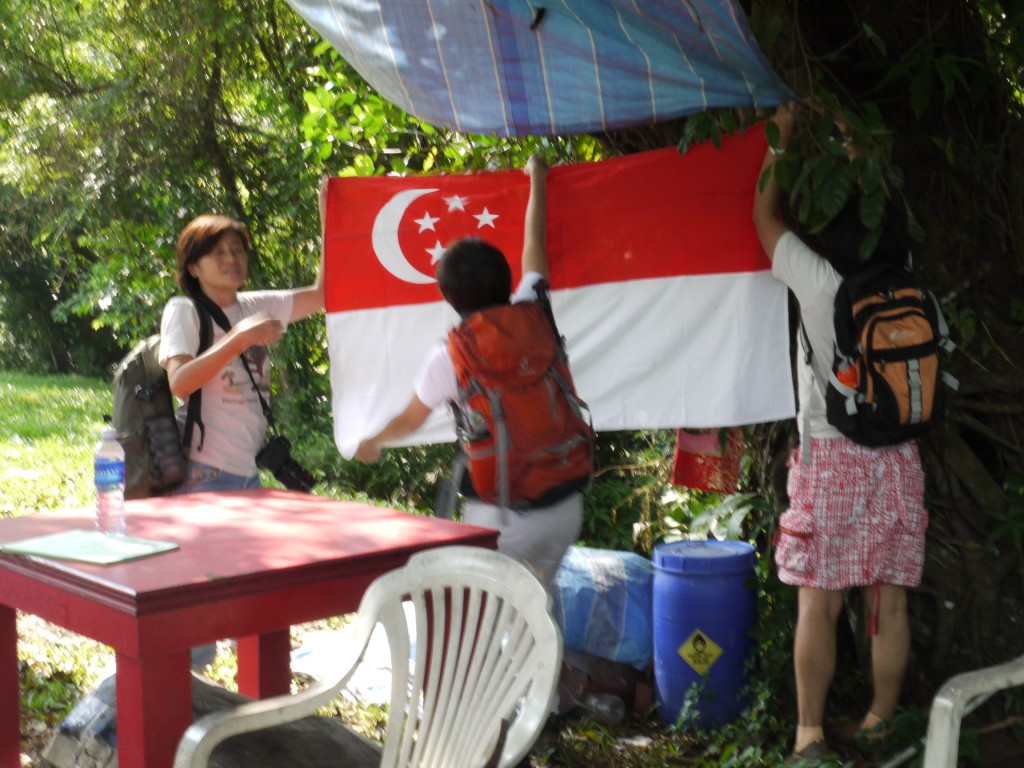
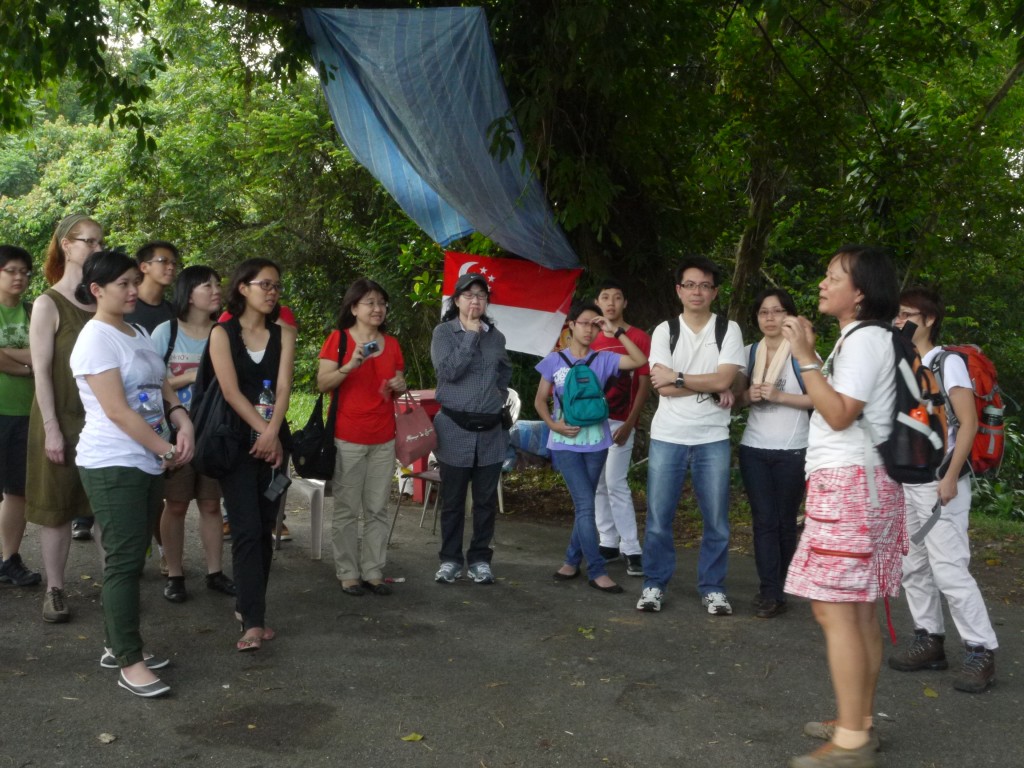
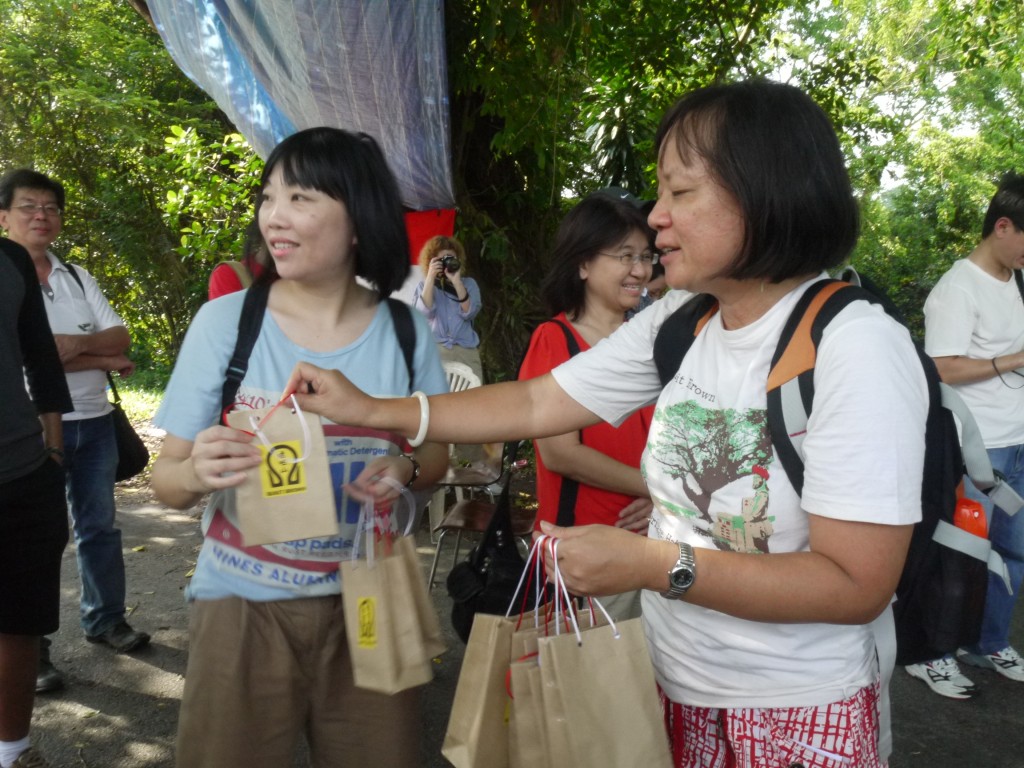
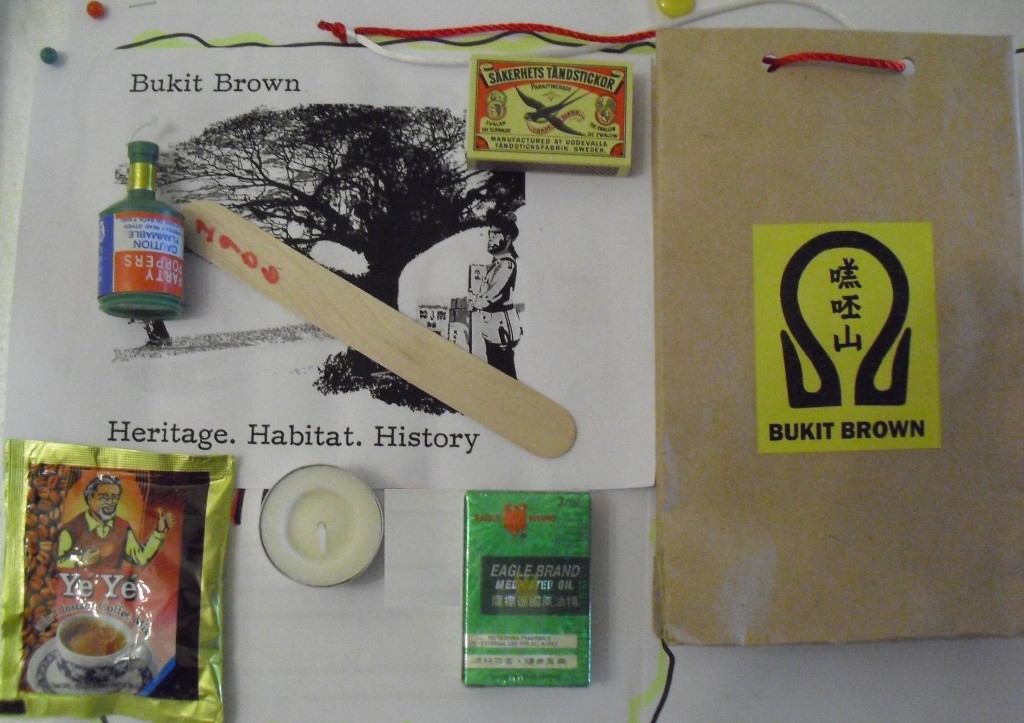

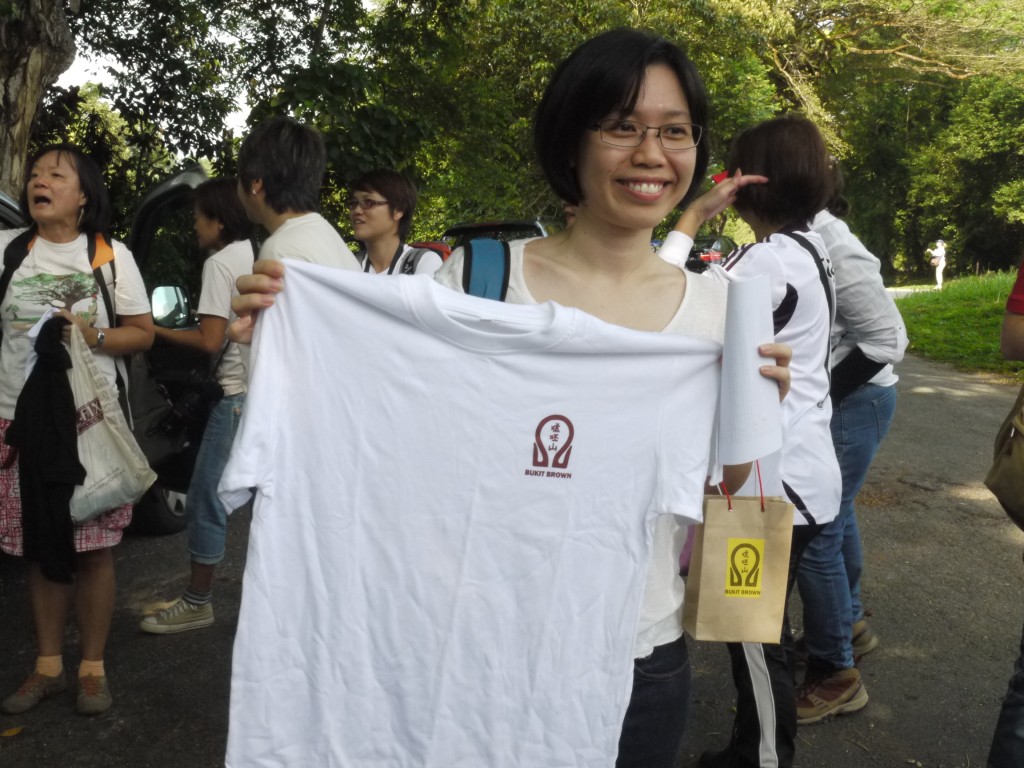
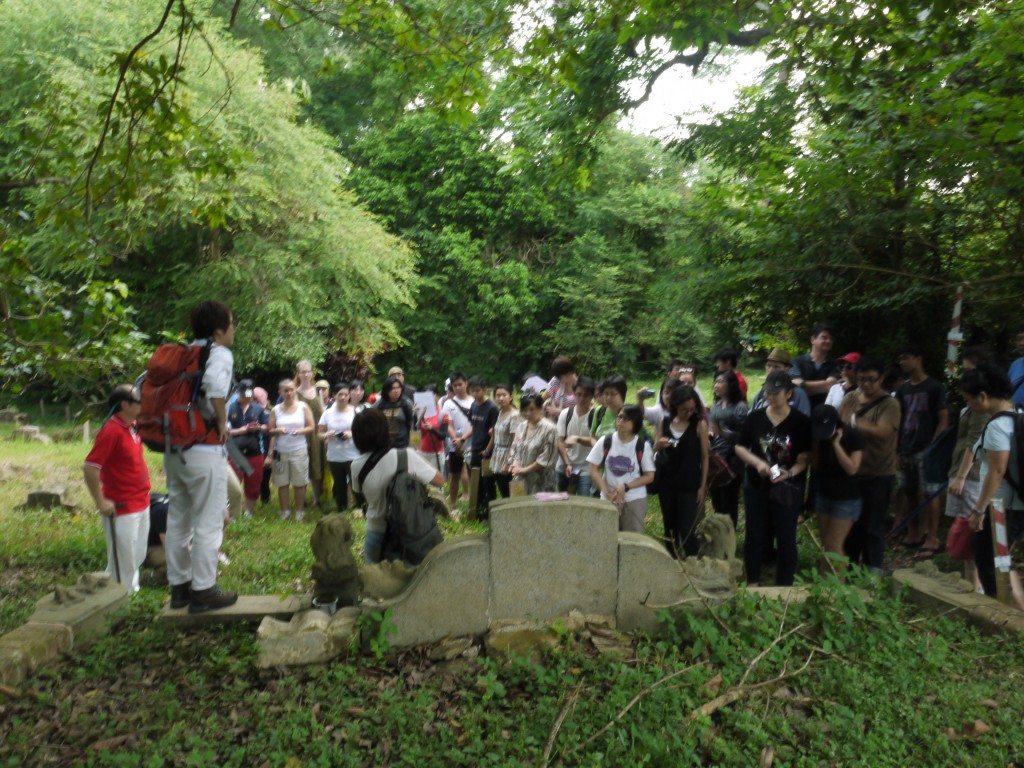

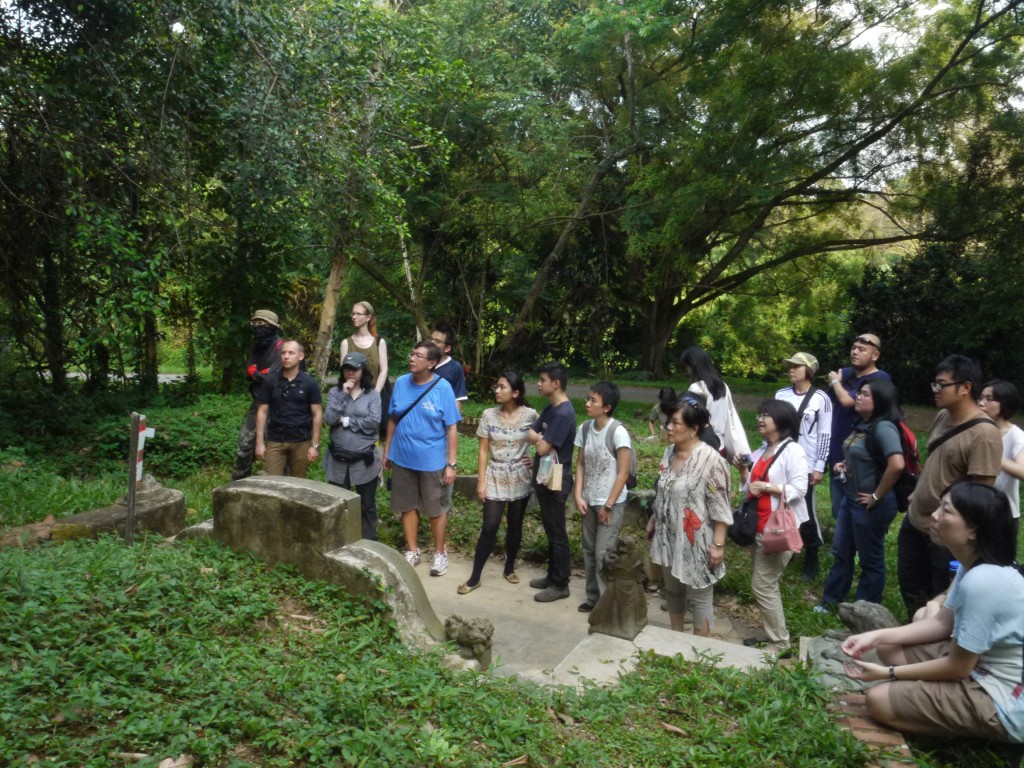

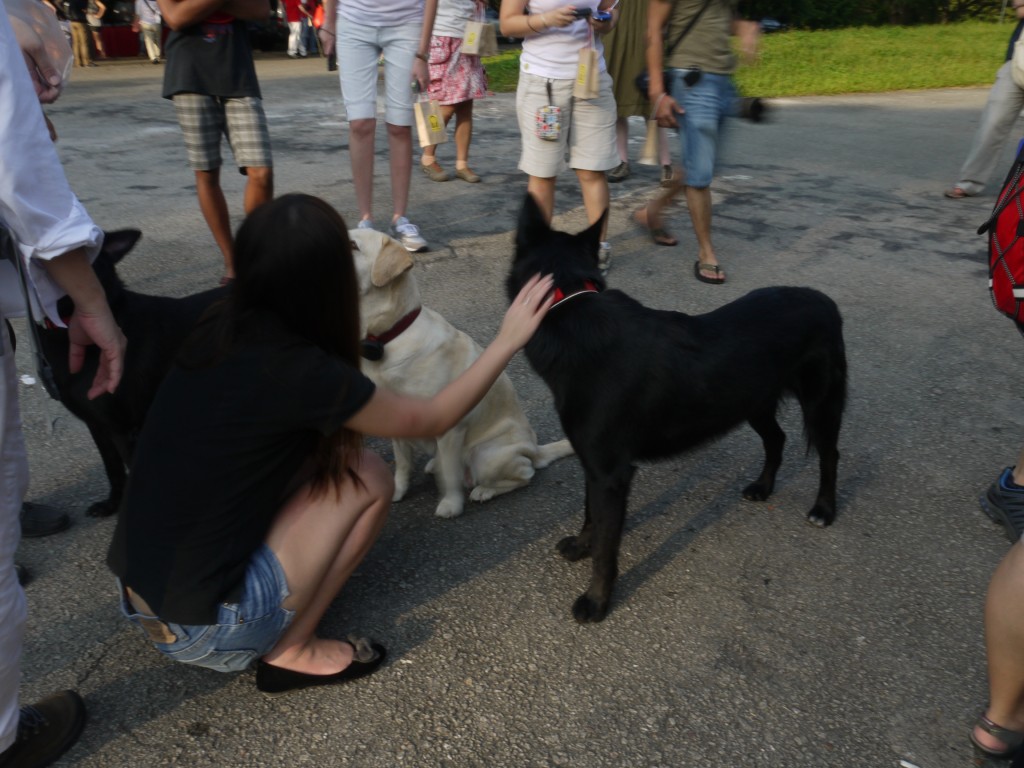


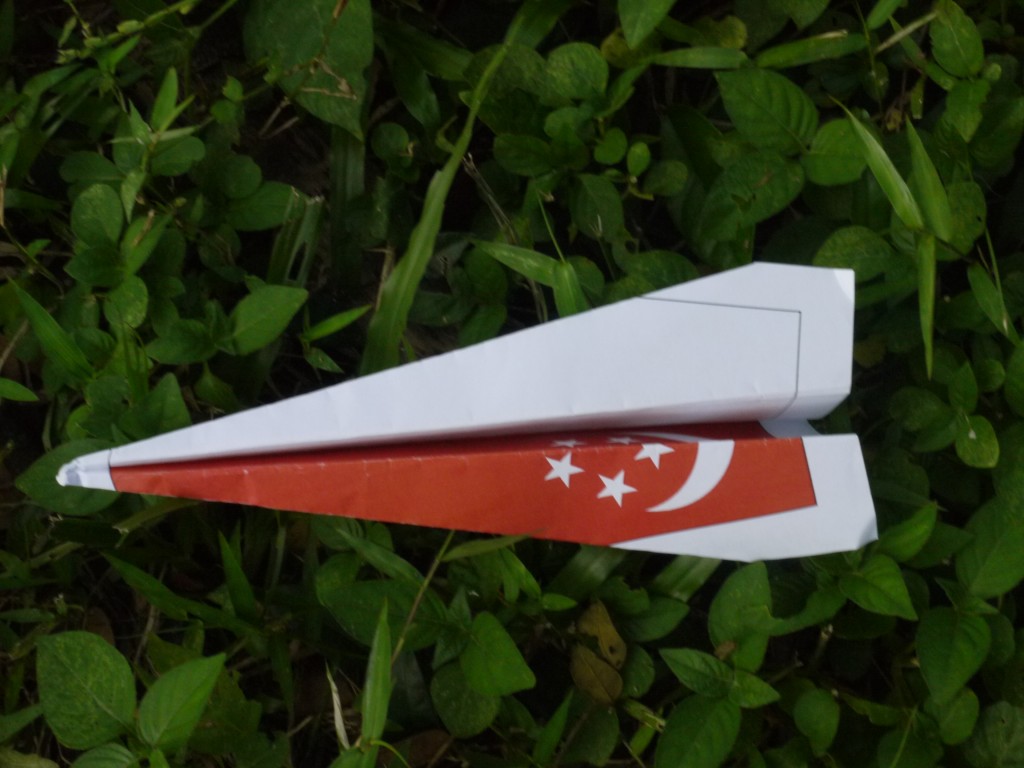
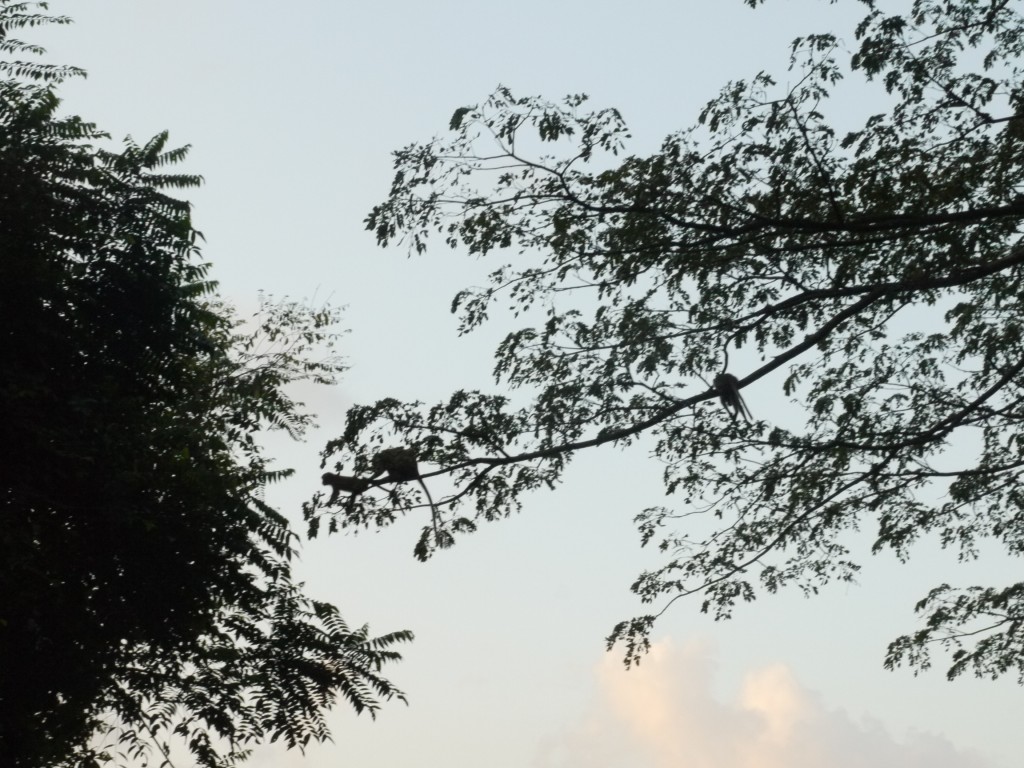


Recent Comments